Krištín Anton
Evolutionary and Behavioural Ecology RG
Senior Scientist

RNDr. Krištín Anton, DrSc.
Slovak Academy of Sciences
Institute of Forest Ecology
Evolutionary & Behavioural Ecology Research Group
Ľudovíta Štúra 1774/2
960 01 Zvolen
Phone: +421 902641420
Email: kristin@ife.sk
ORCID iD: http://orcid.org/0000-0001-7422-6393
Research Gate: https://www.researchgate.net/profile/Anton_Kristin
Research interests: behavioural ecology and reproductive strategies of birds, orthopterans; foraging and feeding ecology of birds, relationships between birds, insects and plants; life decisions and survival strategies in selected endangered species of birds, orthopterans and bats; IUCN Red List of European Orthoptera and principles for species selection in Anex II of Habitats Directive. Applied research is focused on suggestions of rules and principles in habitats management for particular study species and assemblages.
Education:
- DSc. (DrSc.) in Ecology, 010520-010530, Slovak Academy of Sciences, Bratislava (2007)
- PhD. in Ecology and Systematic Zoology, Comenius University, Bratislava (1982-1985)
- RNDr. Department of Systematic Zoology and Ecology, Comenius University, Bratislava (1980)
Academic employment:
- Senior scientist, Institute of Forest Ecology, SAS, Zvolen (since 1993)
Projects:
- VEGA 2/0097/16 – Ecology and reproductive strategies in related and syntopic living animals (principal investigator)
- VEGA 2/0061/15 – Evolutionary ecology of invertebrates using copulation gifts: impact of area, habitat, phenotype and genetics
- VEGA 2/0035/13 – Reactions of animal species to changing forest structure
- VEGA 2/0157/11 – Fragmentation and formation of new habitats after forest disturbances: ecological plasticity of species and their communities (principal investigator)
- APVV 497-10 – Adaptive and non-adaptive changes of phenotype traits evolving in isolated populations
Scholarships:
- Konrad Lorenz Institute of comparative Ethology Wien at Austrian Academy of Sciences (Austria, 11 months in 1996 – 2015)
- Institute of Zoology Chinese Academy of Sciences, Beijing (China, 5 months 2002, 2003, 2004, 2007, 2011)
- Consejo superior de Investigationes Cientificas (CSIC), Estaciones Experimentale de la zonas Aridas, Almeria (Spain, 2 months 1999, 2004)
- International Ornithological Centre, Eilat, (Israel 2 weeks 1997)
- Institute of Ecology PAN Warszawa (Poland, 3 months in 1994 -1996)
- Alexander von Humboldt fellowship – Department of Animal Ecology of University Bayreuth a Department of Applied Zoology of Ludwig Maximilian University in Munich (Germany, 13 months in 1991 – 1992);
Scientific – organizational activity:
- member of the Grant Agency, Commission for Ecological and Biological Sciences at the Slovak Academy of Sciences (1991-1997, 1999-2015)
- organizator of 28 international ornithological conferences in Slovakia (1988-2015) and 12 international mammaliological conferences (1994-2015)
- co-organizator of the 11 International conferences in China, Germany, Austria and Poland
- head of Department of Animal Ecology at the Institute of Forest Ecology of Slovak Academy of Sciences in Zvolen (since 1993)
- chairman of Committee of experts for Animal conservation by Slovak environmental Agency Banska Bystrica (since 1994)
- independent expert European Commission for NATURA 2000 (Bruxelles, Paris, since 2005)
- member of the Learned Society in Slovakia (since 2016)
- chair of Scientific board at Institute of Forest Ecology SAS, Zvolen (since 2017)
Educational activity:
- supervisor of 11 doctoral dissertations in animal ecology (1 Prague, 1 Munich, 1 České Budějovice, 1 Bratislava, 7 Zvolen);
- consultant and profesor of 4 foreign PhD. students a Diploma thesis Students (Wirtitsch – Austria 1999, Raess & Schmiedl – Germany 2001-2002, Strasser & Hahner – Germany 2005, Barner – Germany 2016) and 3 post doc stays in Slovakia
- reviewer for Ph.D. Thesis, Assis Prof., Professores on following Universities: Munich (1995), Wien (2001), Praha (1999, 2000, 2002, 2004, 2008), České Budějovice (1999, 2001, 2007), Brno (1996, 2008), Bratislava (od r. 1994), Zvolen (since 1992)
- Chair of the Commission for Dsc./DrSc. theses defences in the field Ecology (101520-10530) in Czech and Slovak Republics (2010–2015, 2016-2021)
- Member of Expert Commissions for Ph.D. thesis defending at following Universities and disciplines: Prague – Zoology (since 1996), Bratislava – Zoology (1994–2010), Zvolen –Ecology (1994–2010), Zvolen – Hunting & game biology (since 2005), Zvolen – General ecology and ecology of individuals and populations (since 2008 guarant of this PhD study at IFE SAS)
- invited lectures on foreign Universities – Ľviv 1989 (Ukrajine), Bayreuth 1992, Munich 1992, 1993, Bonn 1992, Bochum 1994, 1995, Franfurkt am Main 2002 (Germany), Budapest 1994, 1996, 2002 (Hungary), Wien 1995, 1997, 1999, 2001 (Austria), Praha (1993,1996,1999,2001), Beijing 2003, Xi-An 2003, Kunmimg 2007 (China), Dornbirn 2003 (Austria), Erlangen 2004 (Germany), Olomouc, Czech Rep. (2005), University of East Anglia, Norwich, UK (2013), Masaryk University, Brno, Czech Rep. (2014)
- lectures and practices: Animal Ecology – PriFUK Bratislava (1981-1982), – Bayreuth and Munich University (1991-1992)
Editorial & Public activity & Patents:
- member of editorial boards of international professional journals as Folia Zoologica (since 1995) , Biologia (Bratislava) (since 1991) – both registered in WOS and CC, Sylvia (Prague, since 1993) registered in SCOPUS, Tichodroma (Bratislava – editor in chief since 2006) registered in Zoological records
- independent expert of European Commision for NATURA 2000 (Bruxelles, Paris, since 2005)
- member of Grasshopper Specialist Group by IUCN (Bruxelles, since 2013)
- member of European Ornithologist Union Committee (1997-2003)
- reviewer in CC journals (e.g. Science, Nature, Behavioral Processes, Behaviour, Behavioral Ecology and Sociobiology, Biodiversity and Conservation, Journal of Arid environment, Journal of Ethology, Oecologia (Berlin), Oikos, Ornis fennica, Polish Journal of Ecology, Acta zoologica sinica, Folia zoologica, Biologia, Journal of Ornithology, Acta ornithological, Auk, Ibis…)
- member of scientific and professional unions: a/ Czech Ornithological Society, b/ Slovak Ornithological Society (vicepresident), c/ Slovak Zoological Society, d/ Slovak Entomological Society
- over 280 lectures at conferences, symposiums, workshops, congresses
- over 160 expertises, reviews and statements
- 9 patents on pheromone preparations and trapping systems for insects, six of them realized in praxis
Awards:
1985: Golden medal Incheba – for pheromone trap and preparates for bark beetles
1992: Alexander von Humboldt fellow
1995, 2006, 2016: Bronz, silver & golden medal of Prof. Oskár Ferianc – for development of zoology and animal ecology in Slovakia
2000, 2001, 2002, 2012, 2013: Three Premium awards and two Prices of Slovak Literature foundation for international important monographs
2011: Honorary plaquette of Slovak Academy of Sciences for progress in biological sciences
2016: Medal of Rector of the Technical univerzity in Zvolen – for long term cooperation with Technical univerzity in Zvolen
List of my publications:
2024 |
|
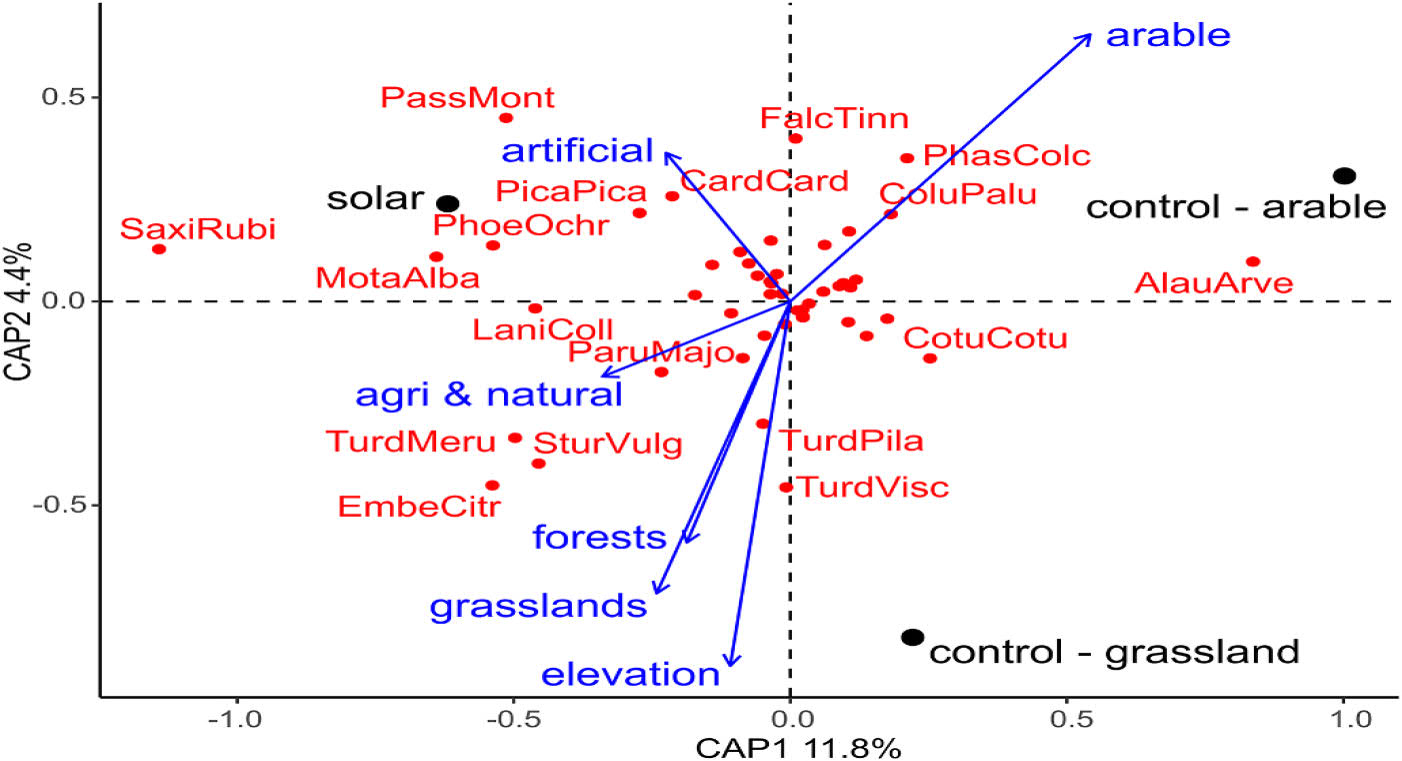 | Jarčuška, Benjamín; Gálffyová, Monika; Schnürmacher, Richard; Baláž, Michal; Mišík, Miloslav; Repel, Matej; Fulín, Miroslav; Kerestúr, Dušan; Lackovičová, Zuzana; Mojžiš, Marian; Zámečník, Matej; Kaňuch, Peter; Krištín, Anton Solar parks can enhance bird diversity in agricultural landscape Journal Article Journal of Environmental Management, 351 , pp. 119902, 2024, ISSN: 0301-4797. @article{Jar_u_ka_2024, title = {Solar parks can enhance bird diversity in agricultural landscape}, author = {Benjamín Jarčuška and Monika Gálffyová and Richard Schnürmacher and Michal Baláž and Miloslav Mišík and Matej Repel and Miroslav Fulín and Dušan Kerestúr and Zuzana Lackovičová and Marian Mojžiš and Matej Zámečník and Peter Kaňuch and Anton Krištín}, url = {http://dx.doi.org/10.1016/j.jenvman.2023.119902}, doi = {10.1016/j.jenvman.2023.119902}, issn = {0301-4797}, year = {2024}, date = {2024-01-01}, journal = {Journal of Environmental Management}, volume = {351}, pages = {119902}, publisher = {Elsevier BV}, keywords = {}, pubstate = {published}, tppubtype = {article} } |
 | Schmidt, Robin; Dufresnes, Christophe; Krištín, Anton; Künzel, Sven; Vences, Miguel; Hawlitschek, Oliver Phylogenetic insights into Central European Chorthippus and Pseudochorthippus (Orthoptera: Acrididae) species using ddRADseq data Journal Article Molecular Phylogenetics and Evolution, 193 , pp. 108012, 2024, ISSN: 1055-7903. @article{Schmidt_2024, title = {Phylogenetic insights into Central European Chorthippus and Pseudochorthippus (Orthoptera: Acrididae) species using ddRADseq data}, author = {Robin Schmidt and Christophe Dufresnes and Anton Krištín and Sven Künzel and Miguel Vences and Oliver Hawlitschek}, url = {http://dx.doi.org/10.1016/j.ympev.2024.108012}, doi = {10.1016/j.ympev.2024.108012}, issn = {1055-7903}, year = {2024}, date = {2024-01-01}, journal = {Molecular Phylogenetics and Evolution}, volume = {193}, pages = {108012}, publisher = {Elsevier BV}, keywords = {}, pubstate = {published}, tppubtype = {article} } |
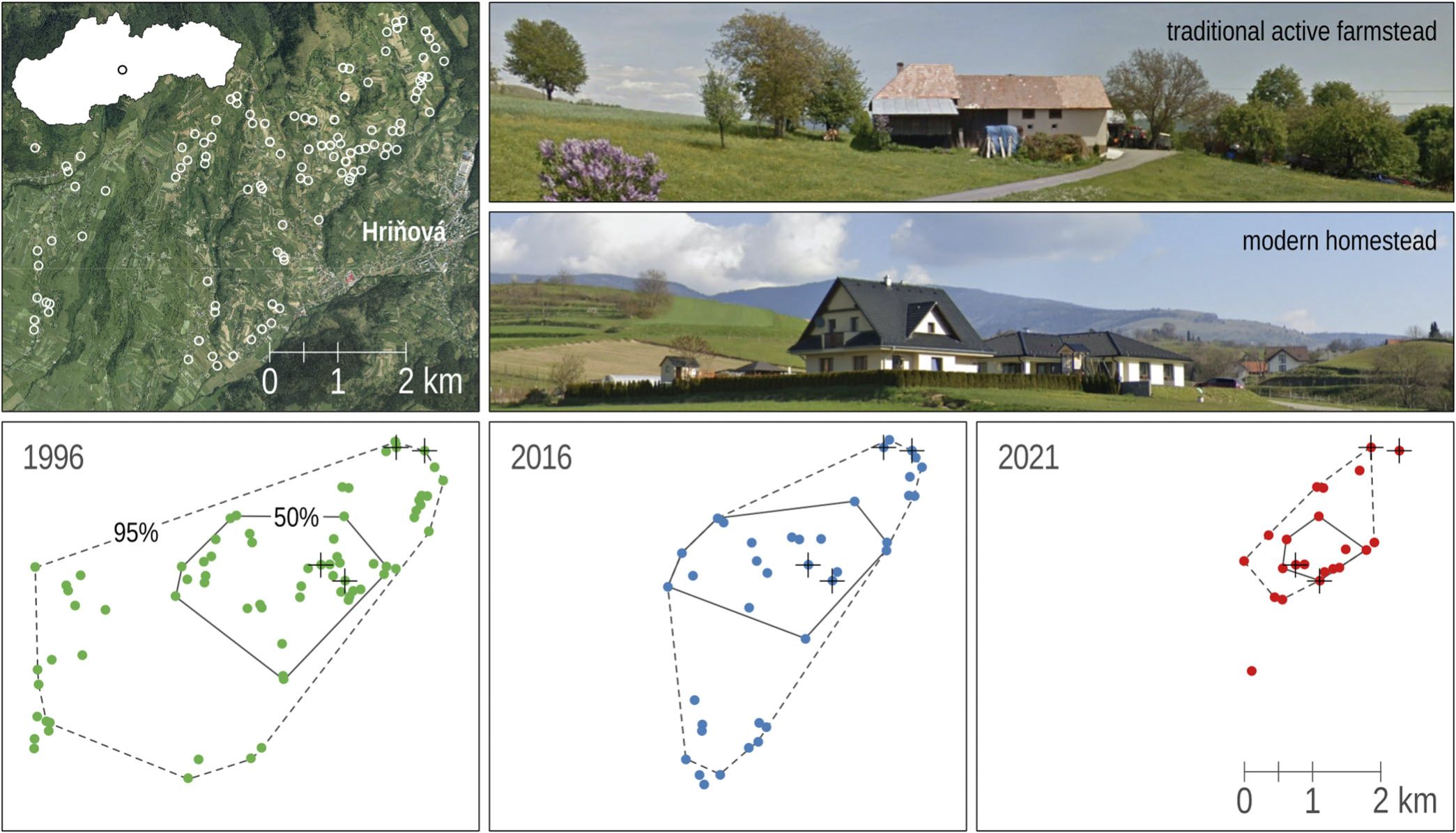 | Krištín, Anton; Hoi, Herbert; Kaňuch, Peter Local population decline of the threatened Lesser Grey Shrike Lanius minor is linked to the modernisation of the rural landscape Journal Article Bird Conservation International, 34 , 2024, ISSN: 1474-0001. @article{Kri_t_n_2024, title = {Local population decline of the threatened Lesser Grey Shrike Lanius minor is linked to the modernisation of the rural landscape}, author = {Anton Krištín and Herbert Hoi and Peter Kaňuch}, url = {http://dx.doi.org/10.1017/S095927092400011X}, doi = {10.1017/s095927092400011x}, issn = {1474-0001}, year = {2024}, date = {2024-01-01}, journal = {Bird Conservation International}, volume = {34}, publisher = {Cambridge University Press (CUP)}, keywords = {}, pubstate = {published}, tppubtype = {article} } |
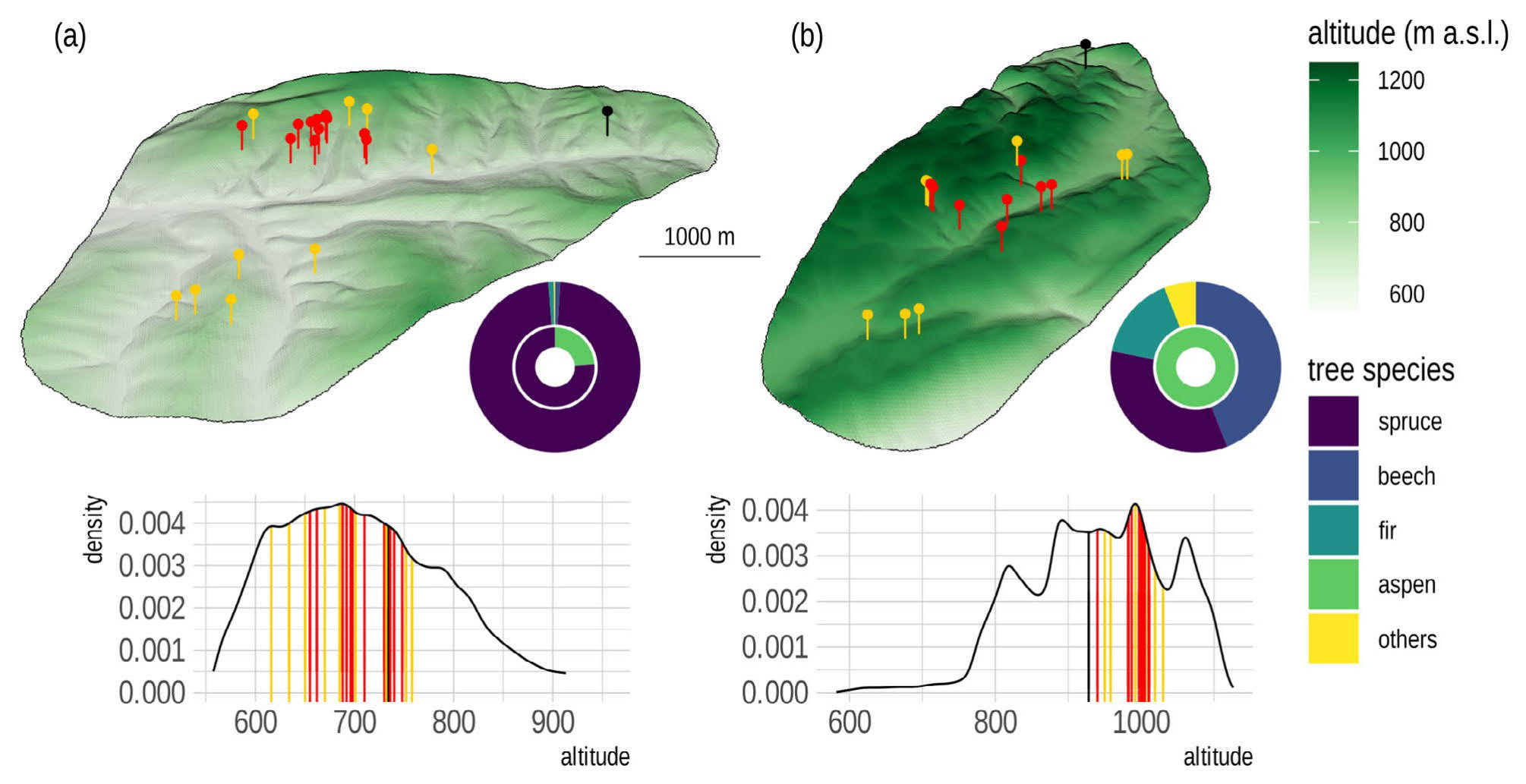 | Kaňuch, Peter; Lőbbová, Denisa; Bovin, Clémence; Ružinská, Romana; Jarčuška, Benjamín; Krištín, Anton; Kaňuchová, Andrea Maternity roosts of the giant noctule, Nyctalus lasiopterus, in preserved and disturbed forests of the Western Carpathians Journal Article Journal of Vertebrate Biology, 73 (24022), 2024, ISSN: 2694-7684. @article{Ka_uch_2024, title = {Maternity roosts of the giant noctule, Nyctalus lasiopterus, in preserved and disturbed forests of the Western Carpathians}, author = {Peter Kaňuch and Denisa Lőbbová and Clémence Bovin and Romana Ružinská and Benjamín Jarčuška and Anton Krištín and Andrea Kaňuchová}, url = {http://dx.doi.org/10.25225/jvb.24022}, doi = {10.25225/jvb.24022}, issn = {2694-7684}, year = {2024}, date = {2024-01-01}, journal = {Journal of Vertebrate Biology}, volume = {73}, number = {24022}, publisher = {Institute of Vertebrate Biology, Academy of Sciences of the Czech Republic}, keywords = {}, pubstate = {published}, tppubtype = {article} } |
Krištín, Anton Lesser Grey Shrike Lanius minor at the North-Western Edge of Its Range: Comments to Population Decline and Migration Strategies Journal Article European Journal of Ecology, 10 , pp. 20-22, 2024. @article{Krištín2024, title = {Lesser Grey Shrike Lanius minor at the North-Western Edge of Its Range: Comments to Population Decline and Migration Strategies}, author = {Anton Krištín}, year = {2024}, date = {2024-01-01}, journal = {European Journal of Ecology}, volume = {10}, pages = {20-22}, keywords = {}, pubstate = {published}, tppubtype = {article} } | |
2023 |
|
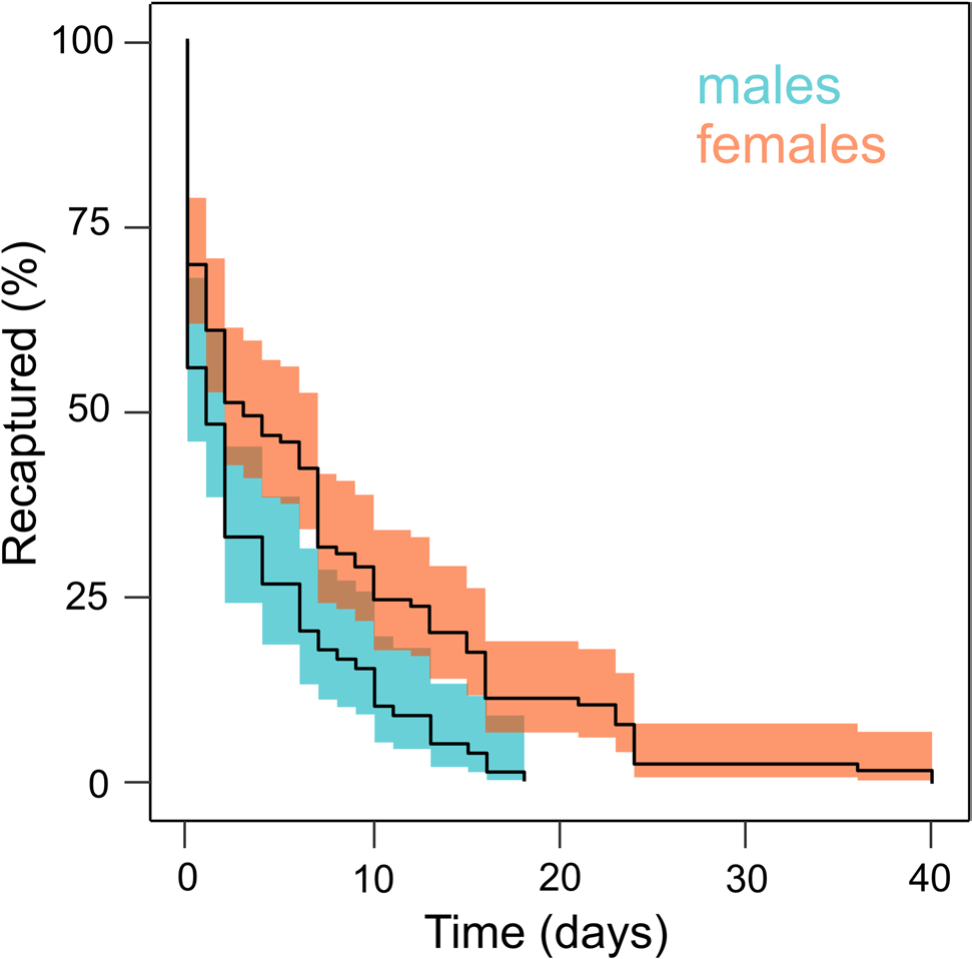 | Nuhlíčková, Soňa; Svetlík, Ján; Kaňuch, Peter; Krištín, Anton; Jarčuška, Benjamín Movement patterns of the endemic flightless bush-cricket, Isophya beybienkoi Journal Article Journal of Insect Conservation, 2023, ISSN: 1572-9753. @article{Nuhlíčková2023, title = {Movement patterns of the endemic flightless bush-cricket, \textit{Isophya beybienkoi}}, author = {Soňa Nuhlíčková and Ján Svetlík and Peter Kaňuch and Anton Krištín and Benjamín Jarčuška}, url = {http://dx.doi.org/10.1007/s10841-023-00529-0}, doi = {10.1007/s10841-023-00529-0}, issn = {1572-9753}, year = {2023}, date = {2023-10-01}, journal = {Journal of Insect Conservation}, publisher = {Springer Science and Business Media LLC}, keywords = {}, pubstate = {published}, tppubtype = {article} } |
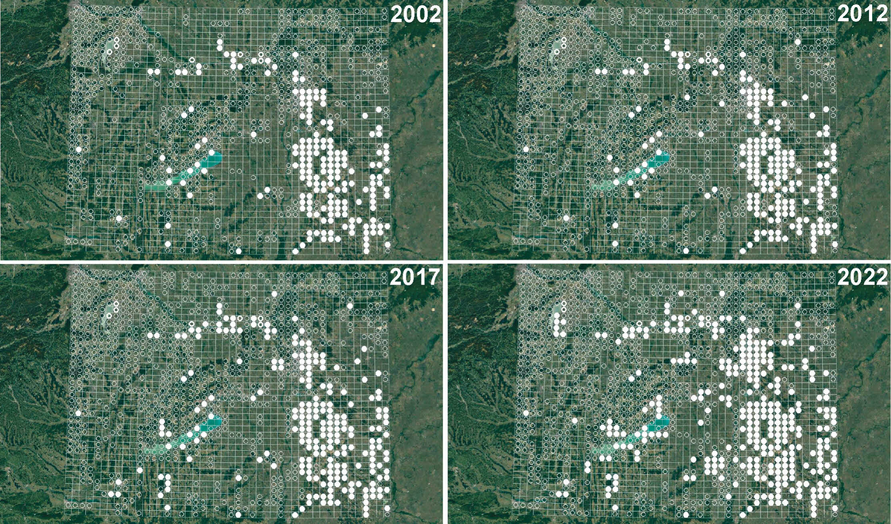 | KENYERES, Zoltán; BAUER, Norbert; ZUNA-KRATKY, Thomas; MAGYARI, Máté; SKEJO, Josip; KRIŠTÍN, Anton European Journal of Entomology, 120 , pp. 338–345, 2023, ISSN: 1802-8829. @article{KENYERES2023, title = {Recent growth in occurrences of \textit{Acrida ungarica} (Orthoptera: Acrididae) at the northern margin of the species range: Is it the result of global warming?}, author = {Zoltán KENYERES and Norbert BAUER and Thomas ZUNA-KRATKY and Máté MAGYARI and Josip SKEJO and Anton KRIŠTÍN}, url = {http://dx.doi.org/10.14411/eje.2023.035}, doi = {10.14411/eje.2023.035}, issn = {1802-8829}, year = {2023}, date = {2023-09-09}, journal = {European Journal of Entomology}, volume = {120}, pages = {338–345}, publisher = {Biology Centre, AS CR}, keywords = {}, pubstate = {published}, tppubtype = {article} } |
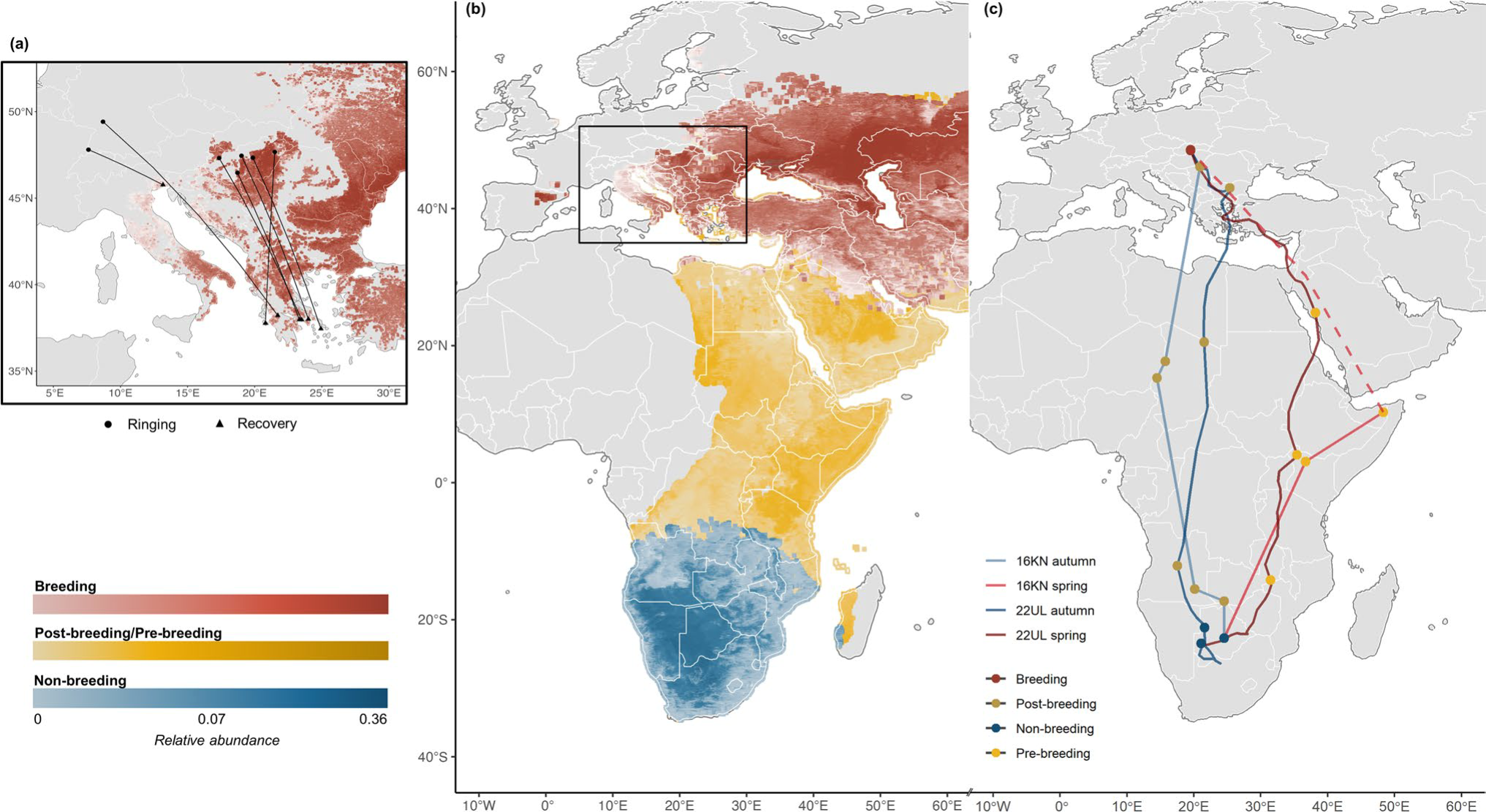 | Adamík, Peter; Wong, Joanna B; Hahn, Steffen; Krištín, Anton Journal of Ornithology, 2023, ISSN: 2193-7206. @article{Adamík2023, title = {Non-breeding sites, loop migration and flight activity patterns over the annual cycle in the Lesser Grey Shrike \textit{Lanius minor} from a north-western edge of its range}, author = {Peter Adamík and Joanna B Wong and Steffen Hahn and Anton Krištín}, url = {http://dx.doi.org/10.1007/s10336-023-02102-7}, doi = {10.1007/s10336-023-02102-7}, issn = {2193-7206}, year = {2023}, date = {2023-06-08}, journal = {Journal of Ornithology}, publisher = {Springer Science and Business Media LLC}, keywords = {}, pubstate = {published}, tppubtype = {article} } |
 | Dobrovodská, M; Kanka, R; Gajdoš, P; Krištín, A; Kollár, J; Stašiov, S; Lieskovský, J Factors affecting the biodiversity of historical landscape elements: detailed analyses from three case studies in Slovakia Journal Article Environmental Monitoring and Assessment, 195 (6), 2023, ISSN: 1573-2959. @article{Dobrovodská2023, title = {Factors affecting the biodiversity of historical landscape elements: detailed analyses from three case studies in Slovakia}, author = {M Dobrovodská and R Kanka and P Gajdoš and A Krištín and J Kollár and S Stašiov and J Lieskovský}, url = {http://dx.doi.org/10.1007/s10661-023-11035-w}, doi = {10.1007/s10661-023-11035-w}, issn = {1573-2959}, year = {2023}, date = {2023-02-20}, journal = {Environmental Monitoring and Assessment}, volume = {195}, number = {6}, publisher = {Springer Science and Business Media LLC}, keywords = {}, pubstate = {published}, tppubtype = {article} } |
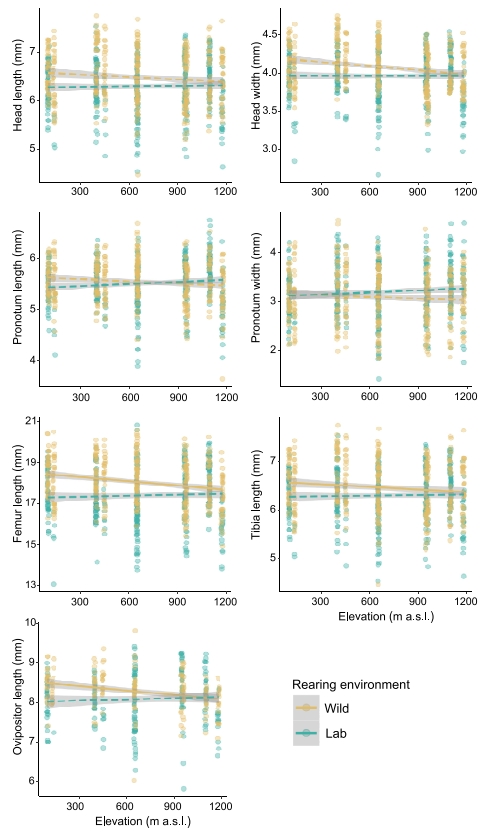 | Jarčuška, Benjamín; Krištín, Anton; Kaňuch, Peter Body size traits in the flightless bush-cricket are plastic rather than locally adapted along an elevational gradient Journal Article Evolutionary Ecology, 37 (3), pp. 509–530, 2023, ISSN: 1573-8477. @article{Jarčuška2023, title = {Body size traits in the flightless bush-cricket are plastic rather than locally adapted along an elevational gradient}, author = {Benjamín Jarčuška and Anton Krištín and Peter Kaňuch}, url = {http://dx.doi.org/10.1007/s10682-023-10231-x}, doi = {10.1007/s10682-023-10231-x}, issn = {1573-8477}, year = {2023}, date = {2023-02-02}, journal = {Evolutionary Ecology}, volume = {37}, number = {3}, pages = {509–530}, publisher = {Springer Science and Business Media LLC}, keywords = {}, pubstate = {published}, tppubtype = {article} } |
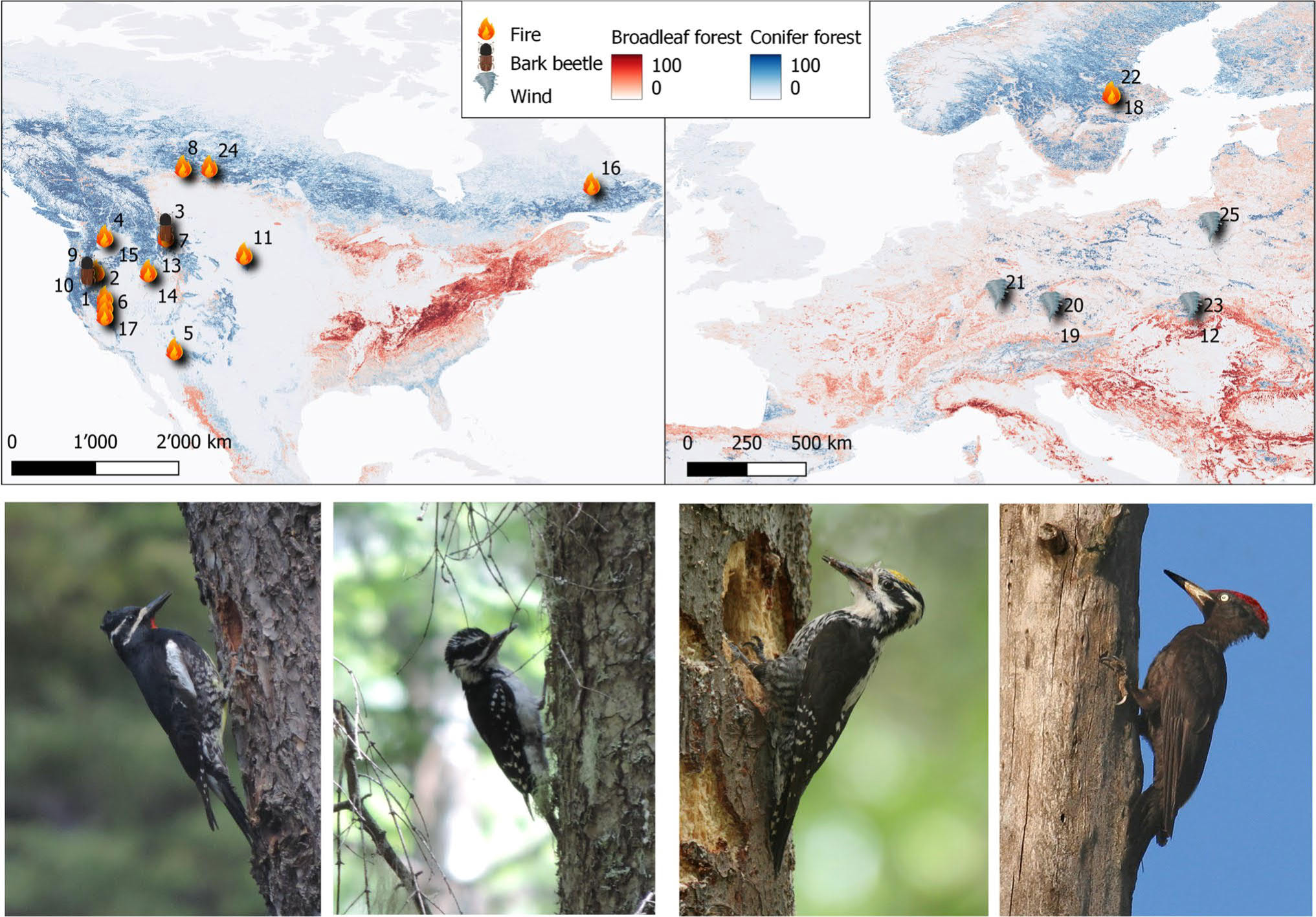 | Basile, Marco; Krištín, Anton; Mikusiński, Grzegorz; Thorn, Simon; Żmihorski, Michał; Pasinelli, Gilberto; Brockerhoff, Eckehard G Salvage Logging Strongly Affects Woodpecker Abundance and Reproduction: a Meta-analysis Journal Article Current Forestry Reports, (9), pp. 1-14, 2023. @article{Basile2023, title = {Salvage Logging Strongly Affects Woodpecker Abundance and Reproduction: a Meta-analysis}, author = {Marco Basile and Anton Krištín and Grzegorz Mikusiński and Simon Thorn and Michał Żmihorski and Gilberto Pasinelli and Eckehard G. Brockerhoff }, doi = {10.1007/s40725-022-00175-w}, year = {2023}, date = {2023-01-01}, journal = {Current Forestry Reports}, number = {9}, pages = {1-14}, abstract = {Purpose of Review Wildfires, wind storms, and pest outbreaks are the main large-scale disturbances of temperate and boreal forests, which often generate large amounts of deadwood in the landscape. Salvage and sanitation loggings (hereafter salvage logging) are usually practiced following such disturbance events and the generated deadwood is then extracted from the forest. Those practices affect a broad array of species, including fungi, lichens, invertebrates, and vertebrates that make use of deadwood either as habitat, food resource, foraging substrate, or as shelter. Woodpeckers, being a key group of forest birds dependent on deadwood, can be affected by salvage logging in two ways: (1) a reduction in the availability of food (i.e. removal of deadwood along with the saproxylic and predatory invertebrates that usually colonize dead or dying trees following forest disturbances) and (2) a decrease in potential nest sites due to the removal of dead trees. Therefore, we assessed the global effects of salvage logging on woodpecker abundance and reproduction by conducting a meta-analysis of published and unpublished data. We focused on comparing woodpeckers’ responses to forest disturbance in salvage-logged and unlogged sites. We considered different types of responses found in the literature, including abundance, occurrence, nest density, and breeding success. When analyzing the responses of woodpeckers, we also accounted for the potential effects of tree density, time since logging, elevation, latitude, and the continent. Recent Findings We found that both numbers and reproduction of woodpeckers were affected by salvage logging following a disturbance event. Apart from salvage logging, woodpecker responses were not significantly related to any other variables. This highlights that salvage logging can pose a substantial threat to woodpecker assemblages as well as secondary cavity-users dependent on them. Summary Salvage logging and related practices that affect deadwood availability should be carefully planned and preferably avoided entirely in areas important for woodpecker conservation. In managed forests, deadwood should be retained in sufficient quantities to avoid detrimental impacts on woodpeckers and on forest biodiversity in general.}, keywords = {}, pubstate = {published}, tppubtype = {article} } Purpose of Review Wildfires, wind storms, and pest outbreaks are the main large-scale disturbances of temperate and boreal forests, which often generate large amounts of deadwood in the landscape. Salvage and sanitation loggings (hereafter salvage logging) are usually practiced following such disturbance events and the generated deadwood is then extracted from the forest. Those practices affect a broad array of species, including fungi, lichens, invertebrates, and vertebrates that make use of deadwood either as habitat, food resource, foraging substrate, or as shelter. Woodpeckers, being a key group of forest birds dependent on deadwood, can be affected by salvage logging in two ways: (1) a reduction in the availability of food (i.e. removal of deadwood along with the saproxylic and predatory invertebrates that usually colonize dead or dying trees following forest disturbances) and (2) a decrease in potential nest sites due to the removal of dead trees. Therefore, we assessed the global effects of salvage logging on woodpecker abundance and reproduction by conducting a meta-analysis of published and unpublished data. We focused on comparing woodpeckers’ responses to forest disturbance in salvage-logged and unlogged sites. We considered different types of responses found in the literature, including abundance, occurrence, nest density, and breeding success. When analyzing the responses of woodpeckers, we also accounted for the potential effects of tree density, time since logging, elevation, latitude, and the continent. Recent Findings We found that both numbers and reproduction of woodpeckers were affected by salvage logging following a disturbance event. Apart from salvage logging, woodpecker responses were not significantly related to any other variables. This highlights that salvage logging can pose a substantial threat to woodpecker assemblages as well as secondary cavity-users dependent on them. Summary Salvage logging and related practices that affect deadwood availability should be carefully planned and preferably avoided entirely in areas important for woodpecker conservation. In managed forests, deadwood should be retained in sufficient quantities to avoid detrimental impacts on woodpeckers and on forest biodiversity in general. |
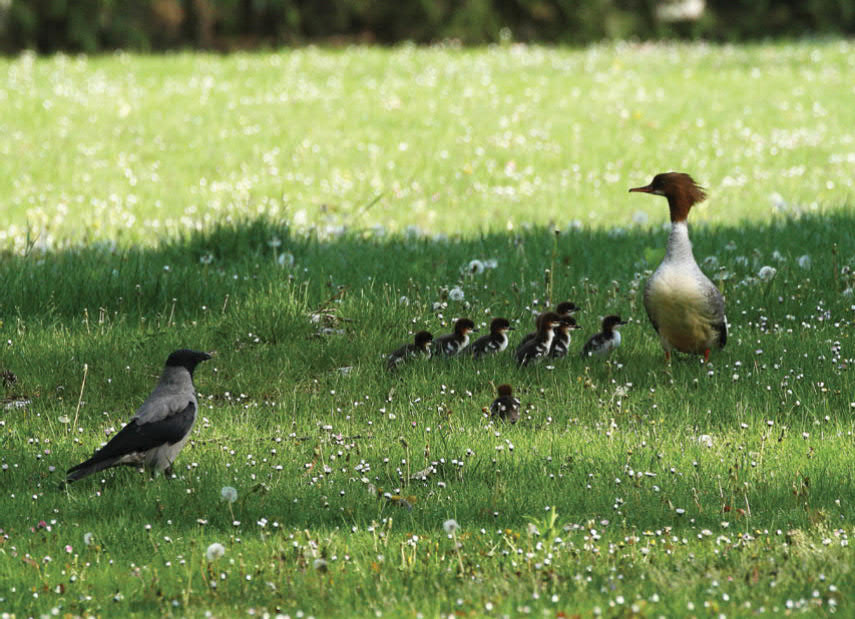 | Kočí, Ján; Krištín, Anton Breeding behaviour and cluster breeding of the Goosander (Mergus merganser) in urban environment Journal Article Tichodroma, 35 (3 – 12), 2023, ISBN: ISSN 1337-026X. @article{Kočí2023, title = {Breeding behaviour and cluster breeding of the Goosander (Mergus merganser) in urban environment}, author = {Ján Kočí and Anton Krištín}, isbn = {ISSN 1337-026X}, year = {2023}, date = {2023-01-01}, journal = {Tichodroma}, volume = {35}, number = {3 – 12}, keywords = {}, pubstate = {published}, tppubtype = {article} } |
2022 |
|
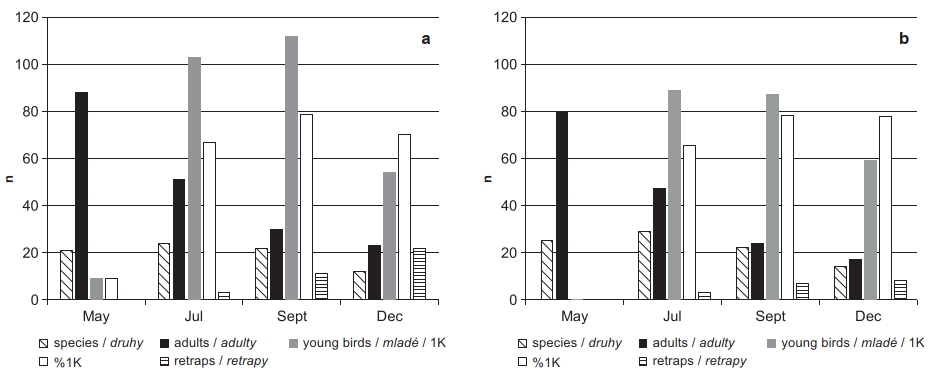 | Krištín, Anton; Blaženec, Miroslav; Kaňuch, Peter Seasonal changes of bird assemblages in a small urban wetland revealed by mist-netting Journal Article Tichodroma, (34), pp. 19–28, 2022. @article{Krištín2022b, title = {Seasonal changes of bird assemblages in a small urban wetland revealed by mist-netting}, author = {Anton Krištín and Miroslav Blaženec and Peter Kaňuch}, doi = {10.31577/tichodroma.2022.34.3}, year = {2022}, date = {2022-12-27}, journal = {Tichodroma}, number = {34}, pages = {19–28}, abstract = {Seasonal differences of bird assemblages were studied using mist-netting method during four seasons (May, July, September, and December) in two years (2014 and 2021) in a secondary wetland habitat (7 mist-nets in willow grove, reed, and scrubland) in Zvolen town, central Slovakia. Altogether 54 species and 876 individuals of birds were captured during 24 days of eight trapping sessions (in 84 m of mist-nets at 7.3 ha study plot). The highest number of mist-netted species and individuals was found in July (36 species, 290 individuals), the lowest was in December (16 species, 153 individuals), pooled for both years. The most abundant species were breeding species Sylvia atricapilla, Parus major, Cyanistes caeruleus and Turdus merula. The characteristic reedbed birds included four Acrocephalus species, Locustella luscinioides, Emberiza schoeniclus, and scrubland species Luscinia megarhynchos, Sylvia communis and Remiz pendulinus. Seasonal differences in species number and abundance are discussed. Regular wintering was found in migratory species Prunella modularis and Erithacus rubecula north of the known winter quarters of their central European breeding populations. The site fidelity and between-season retraps were confirmed in 10 species and 54 individuals (18.5% of all mist-netted species and 6.2% of all individuals). Based on retrapped individuals, the resident species P. major, C. caeruleus, Aegithalos caudatus and T. merula were the most faithful to the site, whereas inter-seasonal retraps of migratory species were rare (e. g. Sylvia atricapilla, Luscinia megarhynchos and Phylloscopus collybita).}, keywords = {}, pubstate = {published}, tppubtype = {article} } Seasonal differences of bird assemblages were studied using mist-netting method during four seasons (May, July, September, and December) in two years (2014 and 2021) in a secondary wetland habitat (7 mist-nets in willow grove, reed, and scrubland) in Zvolen town, central Slovakia. Altogether 54 species and 876 individuals of birds were captured during 24 days of eight trapping sessions (in 84 m of mist-nets at 7.3 ha study plot). The highest number of mist-netted species and individuals was found in July (36 species, 290 individuals), the lowest was in December (16 species, 153 individuals), pooled for both years. The most abundant species were breeding species Sylvia atricapilla, Parus major, Cyanistes caeruleus and Turdus merula. The characteristic reedbed birds included four Acrocephalus species, Locustella luscinioides, Emberiza schoeniclus, and scrubland species Luscinia megarhynchos, Sylvia communis and Remiz pendulinus. Seasonal differences in species number and abundance are discussed. Regular wintering was found in migratory species Prunella modularis and Erithacus rubecula north of the known winter quarters of their central European breeding populations. The site fidelity and between-season retraps were confirmed in 10 species and 54 individuals (18.5% of all mist-netted species and 6.2% of all individuals). Based on retrapped individuals, the resident species P. major, C. caeruleus, Aegithalos caudatus and T. merula were the most faithful to the site, whereas inter-seasonal retraps of migratory species were rare (e. g. Sylvia atricapilla, Luscinia megarhynchos and Phylloscopus collybita). |
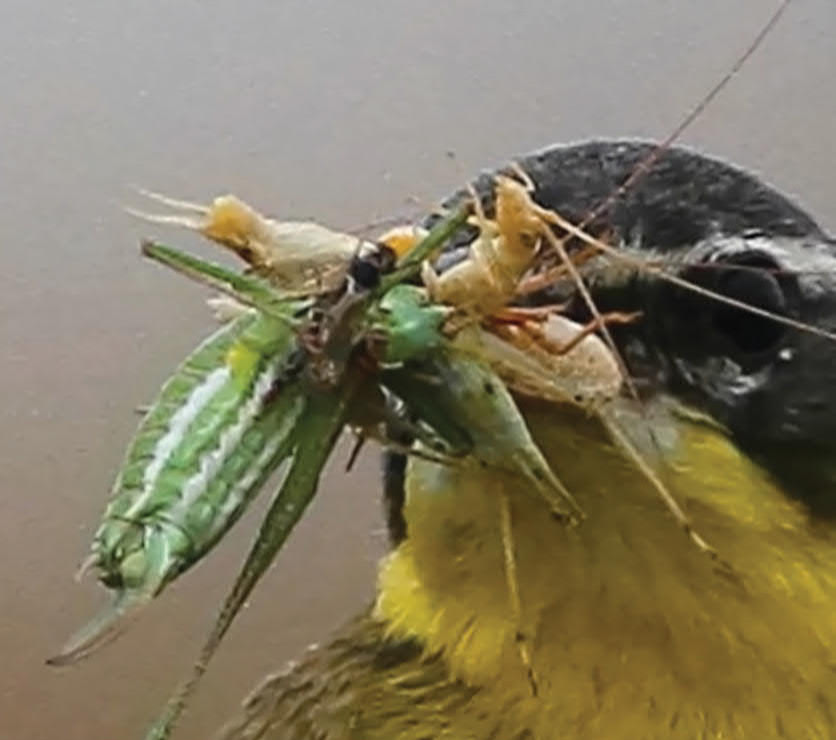 | Kočí, Ján; Krištín, Anton On food composition and foraging ecology of the Western Yellow Wagtail (Motacilla flava) in Western Slovakia Journal Article Tichodroma, (34), pp. 63–69, 2022. @article{Kočí2022, title = {On food composition and foraging ecology of the Western Yellow Wagtail (\textit{Motacilla flava}) in Western Slovakia}, author = {Ján Kočí and Anton Krištín}, doi = {10.31577/tichodroma.2022.34.8}, year = {2022}, date = {2022-12-27}, journal = {Tichodroma}, number = {34}, pages = {63–69}, abstract = {The Western Yellow Wagtail (Motacilla flava) is typical species of agricultural landscapes, where the food supply is significantly limited. The nestling diet composition and its foraging ecology are little known in the entire range. Therefore, we studied the composition of the nestlings’ food and some aspects of its foraging ecology by photos from the shelter, in a population on abandoned agricultural land (17 ha) in Western Slovakia near Piešťany town (48,55098° N, 17,805612° E, 150 m asl.) in April–July 2017–2022. Analyzing 177 photos/feedings of young (1–12 days old) by a male and a female in 9 nests, was found a total of 361 prey items (2.7% of them unidentified). The food consisted of invertebrates from 12 orders, 33 families, and approximately 86 species. Spiders (Araneida, 19.4%), crickets and grasshoppers (Orthoptera, 18.6%), and moths (Lepidoptera) and dipterans (Diptera) with the same proportion 15.2%, belonged to the eudominant prey groups. Among the dominant and frequent species were, e. g., the aposematically coloured spider Argiope bruenichii, the mayfly Ephemera danica, the bush-crickets Leptophyes albovittata, Bicolorana bicolor, from other taxa there were significantly represented Noctuidae and Geometridae caterpillars, cicadas (Cicadellidae) and flies from the suborder Nematocera. The prey body length varied between 2 mm (snail Vallonia pulchella) and 50 mm (dragonfly of the genus Sympetrum) (average 17.1±8.6 mm, n = 361), i.e. it was on average longer than the average bill length (11–12 mm). Parents brought 1–10 prey items per feeding (mean = 2.0±1.5 items/ feeding, ca. 50% >1 object/ feeding, n = 177), the species thus belongs to the group of the “multiple prey loaders”. The size of foraging territories and the role of the parents in chick feeding was studied in one nest in 2022.}, keywords = {}, pubstate = {published}, tppubtype = {article} } The Western Yellow Wagtail (Motacilla flava) is typical species of agricultural landscapes, where the food supply is significantly limited. The nestling diet composition and its foraging ecology are little known in the entire range. Therefore, we studied the composition of the nestlings’ food and some aspects of its foraging ecology by photos from the shelter, in a population on abandoned agricultural land (17 ha) in Western Slovakia near Piešťany town (48,55098° N, 17,805612° E, 150 m asl.) in April–July 2017–2022. Analyzing 177 photos/feedings of young (1–12 days old) by a male and a female in 9 nests, was found a total of 361 prey items (2.7% of them unidentified). The food consisted of invertebrates from 12 orders, 33 families, and approximately 86 species. Spiders (Araneida, 19.4%), crickets and grasshoppers (Orthoptera, 18.6%), and moths (Lepidoptera) and dipterans (Diptera) with the same proportion 15.2%, belonged to the eudominant prey groups. Among the dominant and frequent species were, e. g., the aposematically coloured spider Argiope bruenichii, the mayfly Ephemera danica, the bush-crickets Leptophyes albovittata, Bicolorana bicolor, from other taxa there were significantly represented Noctuidae and Geometridae caterpillars, cicadas (Cicadellidae) and flies from the suborder Nematocera. The prey body length varied between 2 mm (snail Vallonia pulchella) and 50 mm (dragonfly of the genus Sympetrum) (average 17.1±8.6 mm, n = 361), i.e. it was on average longer than the average bill length (11–12 mm). Parents brought 1–10 prey items per feeding (mean = 2.0±1.5 items/ feeding, ca. 50% >1 object/ feeding, n = 177), the species thus belongs to the group of the “multiple prey loaders”. The size of foraging territories and the role of the parents in chick feeding was studied in one nest in 2022. |
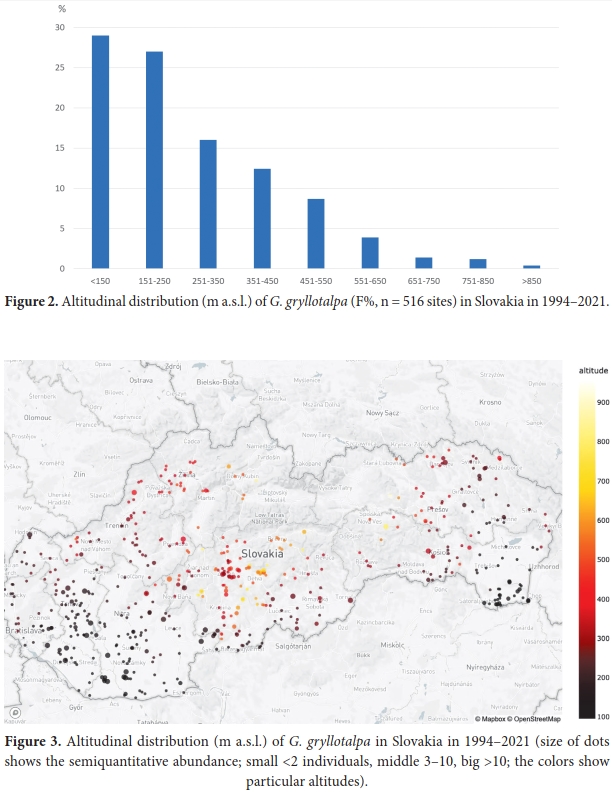 | Danilák, Martin; Lukáň, Martin; Krištín, Anton Distribution of the European mole cricket Gryllotalpa gryllotalpa (Orthoptera) in Slovakia Journal Article Travaux, 65 (1), pp. 15–23, 2022. @article{Danilák2022, title = {Distribution of the European mole cricket \textit{Gryllotalpa gryllotalpa} (Orthoptera) in Slovakia}, author = {Martin Danilák and Martin Lukáň and Anton Krištín}, doi = {10.3897/travaux.64.e79915}, year = {2022}, date = {2022-06-30}, journal = {Travaux}, volume = {65}, number = {1}, pages = {15–23}, abstract = {Gryllotalpa gryllotalpa is widely distributed in the lowlands and hilly regions of southern, western, eastern Slovakia, outside the mountains as the High and Low Tatras. It was found at 516 sites, including 136 sites (5.3% of 2,561 studied sites) which were recorded using regular Orthoptera mapping of primary habitats in 1994–2021 and 380 other sites acquired from a questionnaire survey in 2020 and 2021. Altogether 72 % of the records were collected below 350 m a.s.l., and 98% below 700 m a.s.l. The habitat structure was biased by the result of questionnaire survey (recording mainly secondary habitats), with gardens (> 70%, n = 516) being the most frequent habitat. During regular Orthoptera mapping of primary habitats the most frequently inhabited environments were wet grasslands, marshes (42 %) and meadows (30%, n = 136). Suspected occurrence of the closely related species G. stepposa was investigated at nine lowland sites in southern Slovakia (6 in the Danube River area and 3 in the Ipeľ River area) in 2020 and 2021, but all the determined males (11) belonged to the species G. gryllotalpa. Distributional patterns of the species in Slovakia have been compared with neighboring countries of Europe.}, keywords = {}, pubstate = {published}, tppubtype = {article} } Gryllotalpa gryllotalpa is widely distributed in the lowlands and hilly regions of southern, western, eastern Slovakia, outside the mountains as the High and Low Tatras. It was found at 516 sites, including 136 sites (5.3% of 2,561 studied sites) which were recorded using regular Orthoptera mapping of primary habitats in 1994–2021 and 380 other sites acquired from a questionnaire survey in 2020 and 2021. Altogether 72 % of the records were collected below 350 m a.s.l., and 98% below 700 m a.s.l. The habitat structure was biased by the result of questionnaire survey (recording mainly secondary habitats), with gardens (> 70%, n = 516) being the most frequent habitat. During regular Orthoptera mapping of primary habitats the most frequently inhabited environments were wet grasslands, marshes (42 %) and meadows (30%, n = 136). Suspected occurrence of the closely related species G. stepposa was investigated at nine lowland sites in southern Slovakia (6 in the Danube River area and 3 in the Ipeľ River area) in 2020 and 2021, but all the determined males (11) belonged to the species G. gryllotalpa. Distributional patterns of the species in Slovakia have been compared with neighboring countries of Europe. |
Diviš, Tomáš; Krištín, Anton Frekvence krmení a potrava na hnízdě dudka chocholatého (Upupa epops): případová studie z východních Čech Journal Article Sylvia, 58 (2), pp. 61-75, 2022. @article{Diviš2022, title = {Frekvence krmení a potrava na hnízdě dudka chocholatého (\textit{Upupa epops}): případová studie z východních Čech}, author = {Tomáš Diviš and Anton Krištín}, year = {2022}, date = {2022-06-19}, journal = {Sylvia}, volume = {58}, number = {2}, pages = {61-75}, abstract = {Frekvence krmení a složení potravy dudka chocholatého (Upupa epops) byly studovány na dvou hnízdech v letech 2020 a 2021 u obce Olešnice u Červeného Kostelce ve východních Čechách. Samec krmil inkubující samici nejintenzivněji po rozednění; průměrná frekvence byla 3,1 krmení/h, maximální 6,0×/h. Mláďata byla krmena 0–44×/h, v průměru 5,8–24,8×/h a s rostoucím věkem mláďat častěji. Od rozednění do 13 hodin byla mláďata krmena 77–210×, od 13 hodin do setmění 39–152×. V součtu odpoledního a dopoledního sledování (den před vylétnutím a v den vylétnutí prvního mláděte) krmili rodiče 342×, což je doposud nejvyšší zjištěný počet krmení za dobu odpovídající celému dni. Frekvence krmení byla nejvyšší mezi 5. a 7. hodinou, krmení začínalo ve 4:21–5:02 hodin a končilo v 19:45–20:59 hodin. Ve vzorku 207 zdokumentovaných kusů kořisti bylo zastoupeno 20 druhů bezobratlých z devíti čeledí a šesti řádů. V potravě přinášené samcem inkubující samici dominovaly můry (Noctuidae; zejména housenky) a larvy vrubounovitých brouků (Scarabaeoidae). V potravě mláďat starých 4–11 dnů převažovaly žížaly (Lumbricidae), avšak nečekaně dominantně zde byly zastoupeny také larvy mravkolvů (Myrmeleontidae). U mláďat starých 15–18 dnů převažovaly žížaly a larvy vrubounovitých brouků. U mláďat starších 20 dnů opět převažovali vrubounovití brouci, a to výhradně dospělci chroustka letního (Amphimalon solstitialis). Důvodem vysokého zastoupení žížal v potravě byly zřejmě nadprůměrně vysoké srážky v červnu 2020. }, keywords = {}, pubstate = {published}, tppubtype = {article} } Frekvence krmení a složení potravy dudka chocholatého (Upupa epops) byly studovány na dvou hnízdech v letech 2020 a 2021 u obce Olešnice u Červeného Kostelce ve východních Čechách. Samec krmil inkubující samici nejintenzivněji po rozednění; průměrná frekvence byla 3,1 krmení/h, maximální 6,0×/h. Mláďata byla krmena 0–44×/h, v průměru 5,8–24,8×/h a s rostoucím věkem mláďat častěji. Od rozednění do 13 hodin byla mláďata krmena 77–210×, od 13 hodin do setmění 39–152×. V součtu odpoledního a dopoledního sledování (den před vylétnutím a v den vylétnutí prvního mláděte) krmili rodiče 342×, což je doposud nejvyšší zjištěný počet krmení za dobu odpovídající celému dni. Frekvence krmení byla nejvyšší mezi 5. a 7. hodinou, krmení začínalo ve 4:21–5:02 hodin a končilo v 19:45–20:59 hodin. Ve vzorku 207 zdokumentovaných kusů kořisti bylo zastoupeno 20 druhů bezobratlých z devíti čeledí a šesti řádů. V potravě přinášené samcem inkubující samici dominovaly můry (Noctuidae; zejména housenky) a larvy vrubounovitých brouků (Scarabaeoidae). V potravě mláďat starých 4–11 dnů převažovaly žížaly (Lumbricidae), avšak nečekaně dominantně zde byly zastoupeny také larvy mravkolvů (Myrmeleontidae). U mláďat starých 15–18 dnů převažovaly žížaly a larvy vrubounovitých brouků. U mláďat starších 20 dnů opět převažovali vrubounovití brouci, a to výhradně dospělci chroustka letního (Amphimalon solstitialis). Důvodem vysokého zastoupení žížal v potravě byly zřejmě nadprůměrně vysoké srážky v červnu 2020. | |
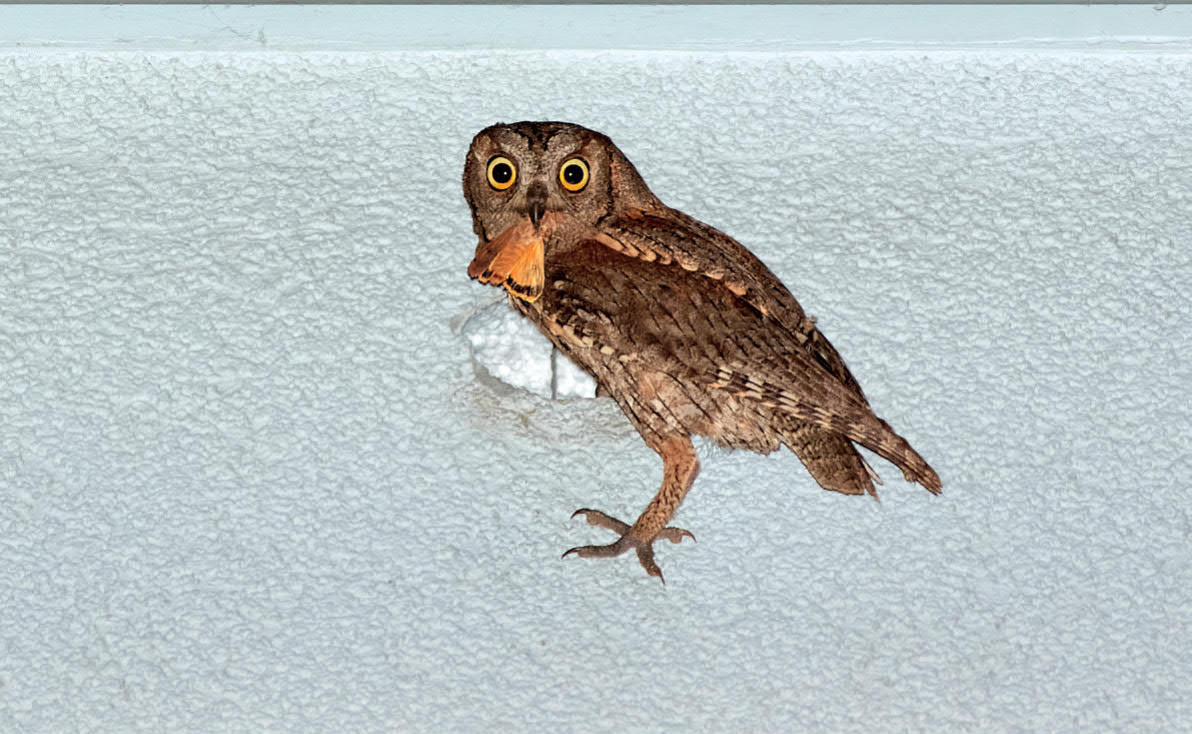 | Grim, Tomáš; Kovařík, Petr; Harmáčková, Lenka; Tošenovský, Evžen; Hladká, Tereza; Spáčil, Patrik; Poprach, Anton Krištín Karel; Sviečka, Jiří První prokázaná městská hnízdění výrečka malého (Otus scops) v Česku Journal Article Sylvia, 58 (2), pp. 17-35, 2022, ISSN: 0231-7796. @article{Grim2022, title = {První prokázaná městská hnízdění výrečka malého (\textit{Otus scops}) v Česku}, author = {Tomáš Grim and Petr Kovařík and Lenka Harmáčková and Evžen Tošenovský and Tereza Hladká and Patrik Spáčil and Anton Krištín Karel Poprach and Jiří Sviečka}, issn = {0231-7796}, year = {2022}, date = {2022-06-19}, journal = {Sylvia}, volume = {58}, number = {2}, pages = {17-35}, abstract = {Hnízdění výrečka malého (Otus scops) v Česku bylo zatím prokázáno pouze jednou (1998, Bílé Karpaty). V roce 2021 jsme doložili hnízdění dvou párů výrečka malého v intravilánu města Olomouce. Jde o první známé urbánní hnízdění této sovy v Česku. Obě hnízdění byla úspěšná, rodiče vyvedli minimálně tři, resp. dvě mláďata. V roce 2022 výrečci v Olomouci opět zahnízdili v obou teritoriích. Zdokumentovali jsme různé aspekty hnízdní biologie (morfologie a umístění hnízdních dutin, frekvence a načasování krmení atd.) tohoto druhu v místě expanze jeho areálu v počátku kolonizace nového území. Potrava mláďat, zjištěná pomocí analýzy fotografií, trusu a detritu z hnízd, zahrnovala především hmyz (mravence, motýly, kobylky, brouky), vzácně drobné obratlovce. Doufáme, že naše práce poslouží jako inspirace pro další výzkum na druzích, které u nás mění hranice svého rozšíření. Bez zapojení veřejnosti do monitoringu výrečků (občanská věda) by hnízdění pravděpodobně unikla pozornosti. Domníváme se, že může jít o druh u nás pravděpodobně již déle hnízdící, ale velmi snadno unikající pozornosti, např. z důvodu velmi omezeného dosahu hlasové aktivity výrečků v rušném městském prostředí a jejího vymizení po spárování.}, keywords = {}, pubstate = {published}, tppubtype = {article} } Hnízdění výrečka malého (Otus scops) v Česku bylo zatím prokázáno pouze jednou (1998, Bílé Karpaty). V roce 2021 jsme doložili hnízdění dvou párů výrečka malého v intravilánu města Olomouce. Jde o první známé urbánní hnízdění této sovy v Česku. Obě hnízdění byla úspěšná, rodiče vyvedli minimálně tři, resp. dvě mláďata. V roce 2022 výrečci v Olomouci opět zahnízdili v obou teritoriích. Zdokumentovali jsme různé aspekty hnízdní biologie (morfologie a umístění hnízdních dutin, frekvence a načasování krmení atd.) tohoto druhu v místě expanze jeho areálu v počátku kolonizace nového území. Potrava mláďat, zjištěná pomocí analýzy fotografií, trusu a detritu z hnízd, zahrnovala především hmyz (mravence, motýly, kobylky, brouky), vzácně drobné obratlovce. Doufáme, že naše práce poslouží jako inspirace pro další výzkum na druzích, které u nás mění hranice svého rozšíření. Bez zapojení veřejnosti do monitoringu výrečků (občanská věda) by hnízdění pravděpodobně unikla pozornosti. Domníváme se, že může jít o druh u nás pravděpodobně již déle hnízdící, ale velmi snadno unikající pozornosti, např. z důvodu velmi omezeného dosahu hlasové aktivity výrečků v rušném městském prostředí a jejího vymizení po spárování. |
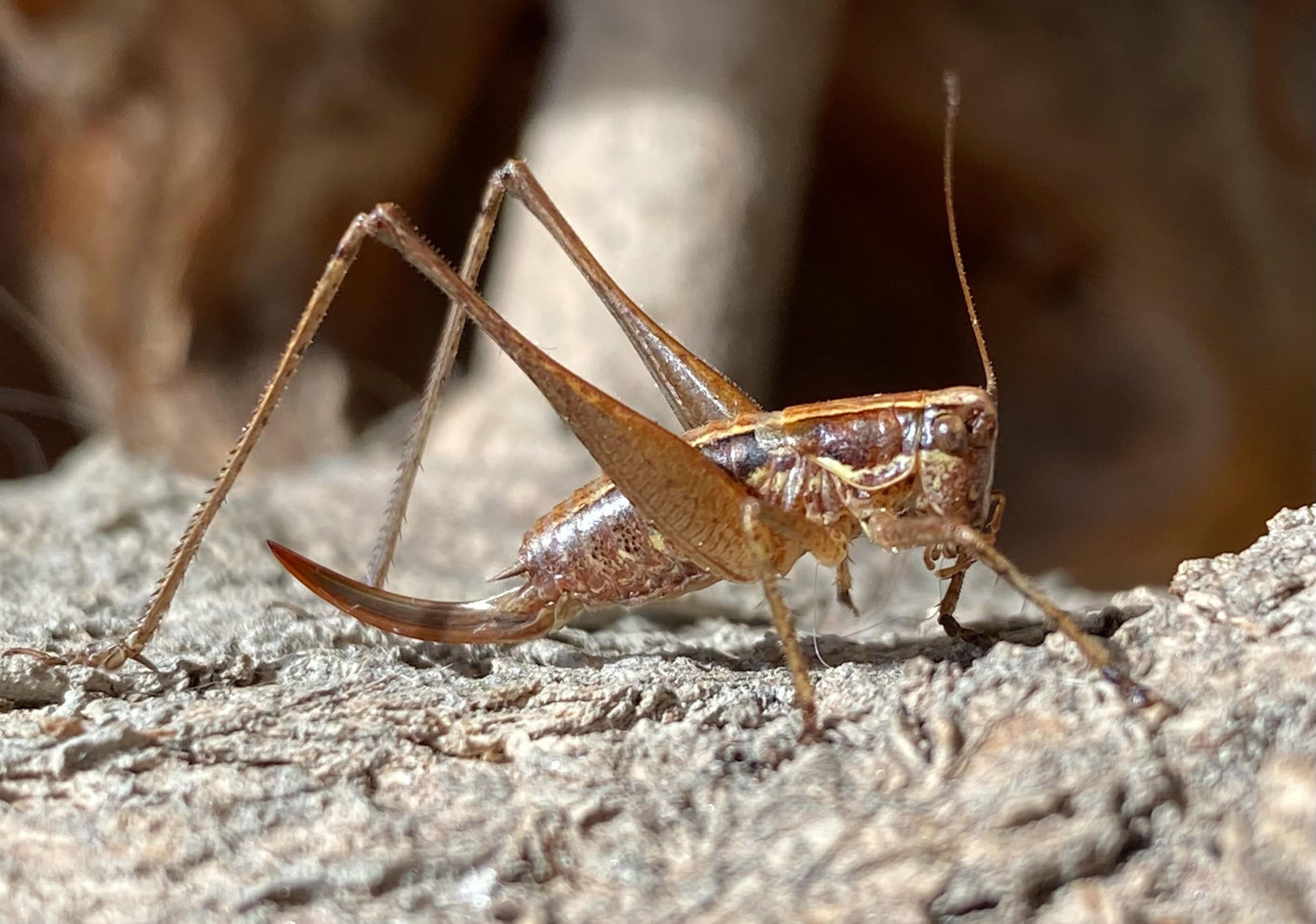 | Krištín, Anton; Čapka, Ján; Zláma, Norbert; Demeš, Pavol First records of the alien bush-crickets Rhacocleis annulata Fieber, 1853 and Yersinella raymondii (Yersin, 1860) (Orthoptera) in Slovakia Journal Article BioInvasions Records, 11 (2), pp. 383–389, 2022. @article{Krištín2022, title = {First records of the alien bush-crickets \textit{Rhacocleis annulata} Fieber, 1853 and \textit{Yersinella raymondii} (Yersin, 1860) (Orthoptera) in Slovakia }, author = {Anton Krištín and Ján Čapka and Norbert Zláma and Pavol Demeš}, doi = {10.3391/bir.2022.11.2.11}, year = {2022}, date = {2022-04-18}, journal = {BioInvasions Records}, volume = {11}, number = {2}, pages = {383–389}, abstract = {The number of alien insect species is increasing worldwide. An update of new records in particular countries is highly needed. Altogether, seven alien Orthoptera species were known until now in Slovakia, four of them already having been established. We present here the first records of the other two alien brachypterous bush-cricket species, Rhacocleis annulata and Yersinella raymondii in Slovakia, found during the Orthoptera survey in Bratislava city. Habitats, phenology, accompanying species in studied sites as well as morphology of adults and eggs are described and discussed. The most important pathway of introduction in both these species seems to be transport of eggs with ornamental plants or soil. }, keywords = {}, pubstate = {published}, tppubtype = {article} } The number of alien insect species is increasing worldwide. An update of new records in particular countries is highly needed. Altogether, seven alien Orthoptera species were known until now in Slovakia, four of them already having been established. We present here the first records of the other two alien brachypterous bush-cricket species, Rhacocleis annulata and Yersinella raymondii in Slovakia, found during the Orthoptera survey in Bratislava city. Habitats, phenology, accompanying species in studied sites as well as morphology of adults and eggs are described and discussed. The most important pathway of introduction in both these species seems to be transport of eggs with ornamental plants or soil. |
2021 |
|
 | Krištín, Anton; Balla, Miloš Grasshoppers, crickets (Orthoptera) and mantids (Mantodea) of the Latorica Protected Landscape Area Book Chapter Invertebrates of the Latorica Protected Landscape Area, pp. 236-250, SNC SR Banská Bystrica and Administration of the Latorica PLA Trebišov, 2021. @inbook{Krištín2021b, title = {Grasshoppers, crickets (Orthoptera) and mantids (Mantodea) of the Latorica Protected Landscape Area}, author = {Anton Krištín and Miloš Balla}, year = {2021}, date = {2021-12-12}, booktitle = {Invertebrates of the Latorica Protected Landscape Area}, pages = {236-250}, publisher = { SNC SR Banská Bystrica and Administration of the Latorica PLA Trebišov}, abstract = {In the Latorica Protected Landscape Area (PLA), 76 species of Orthoptera (59% of all Slovak species) and one mantid species have been recorded in 2004–2020. It includes the area among the Orthoptera species richest areas in Slovakia. They cover 34 Ensifera, and 42 Caelifera species), showing mainly grassland and steppe character of the area. Two species (Acrotylus insubricus, Gampsocleis glabra), have been recorded within Slovakia in the last 24 years exclusively only there. For at least nine species is this area the stronghold of their distribution in Slovakia (Isophya modesta, Poecilimon fussii, Leptophyes discoidalis, Platycleis affinis, Montana montana, Tettigonia caudata, Acrida ungarica, Myrmeleotettix antennatus, Chorthippus dichrous). The majority of species are typical xerothermous representatives living mainly in well preserved sand dunes, salt marshes, xeric forest steppes or in wetlands. Numerous rare and endangered species were recorded in relatively high abundances (e.g. species of EU importance Odontopodisma rubripes, or Polysarcus denticauda, Oedaleus decorus, thus reflecting specific microclimatic conditions in characteristic habitats of this area. Five groups of habitat specialists were distinguished: (i) species preferably occurring in sand dunes and salt marshes (15 species); (ii) forest steppe species (12); (iii) species preferring wetlands, wet grasslands and riparian vegetation along rivers (18); (iv) forest edge dwelling species (13 species); (v) polytopic species (19 species). The local orthopteran assemblages are strongly related to Pannonian and Central European fauna (having contact to Pannonian basin in Hungary). The area includes unique sites with high specific and well-preserved habitats, e.g. sandy dunes around Horeš, Svätuše, Strážne, Beša and Somotor area, wet grasslands and riparian vegetation in Latorica, Tisa and Bodrog Rivers embankments, forest steppes around Ladmovce, Tarbucka, Veľký kopec, Brehov. All these sites are highly endangered by human activities (intensive farming techniques, drainage, sand exploitation, etc.), cover very rare orthopteran species and should be protected for the future generations.}, keywords = {}, pubstate = {published}, tppubtype = {inbook} } In the Latorica Protected Landscape Area (PLA), 76 species of Orthoptera (59% of all Slovak species) and one mantid species have been recorded in 2004–2020. It includes the area among the Orthoptera species richest areas in Slovakia. They cover 34 Ensifera, and 42 Caelifera species), showing mainly grassland and steppe character of the area. Two species (Acrotylus insubricus, Gampsocleis glabra), have been recorded within Slovakia in the last 24 years exclusively only there. For at least nine species is this area the stronghold of their distribution in Slovakia (Isophya modesta, Poecilimon fussii, Leptophyes discoidalis, Platycleis affinis, Montana montana, Tettigonia caudata, Acrida ungarica, Myrmeleotettix antennatus, Chorthippus dichrous). The majority of species are typical xerothermous representatives living mainly in well preserved sand dunes, salt marshes, xeric forest steppes or in wetlands. Numerous rare and endangered species were recorded in relatively high abundances (e.g. species of EU importance Odontopodisma rubripes, or Polysarcus denticauda, Oedaleus decorus, thus reflecting specific microclimatic conditions in characteristic habitats of this area. Five groups of habitat specialists were distinguished: (i) species preferably occurring in sand dunes and salt marshes (15 species); (ii) forest steppe species (12); (iii) species preferring wetlands, wet grasslands and riparian vegetation along rivers (18); (iv) forest edge dwelling species (13 species); (v) polytopic species (19 species). The local orthopteran assemblages are strongly related to Pannonian and Central European fauna (having contact to Pannonian basin in Hungary). The area includes unique sites with high specific and well-preserved habitats, e.g. sandy dunes around Horeš, Svätuše, Strážne, Beša and Somotor area, wet grasslands and riparian vegetation in Latorica, Tisa and Bodrog Rivers embankments, forest steppes around Ladmovce, Tarbucka, Veľký kopec, Brehov. All these sites are highly endangered by human activities (intensive farming techniques, drainage, sand exploitation, etc.), cover very rare orthopteran species and should be protected for the future generations. |
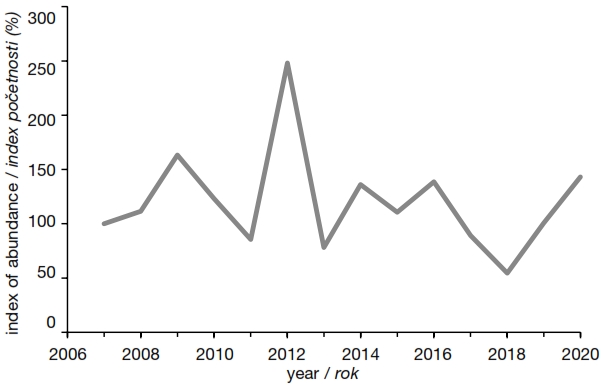 | Urban, Peter; Baláž, Michal; Hrúz, Vladimír; Krištín, Anton Abundance of wintering waterbirds on the Hron River (Slovakia) in 2007–2020 Journal Article Sylvia, 57 , pp. 21-38, 2021. @article{Urban2021, title = {Abundance of wintering waterbirds on the Hron River (Slovakia) in 2007–2020}, author = {Peter Urban and Michal Baláž and Vladimír Hrúz and Anton Krištín}, year = {2021}, date = {2021-11-01}, journal = {Sylvia}, volume = {57}, pages = {21-38}, abstract = {Wintering waterbirds were censused and the effect of ice cover on their abundance was studied on the Hron River (Slovakia) in mid-January 2007–2020. Altogether 24 sites along a 90-km stretch of the middle part of the river was surveyed, of which 23 were sites with running water (81 ha) and one with stagnant water (Kozmálovce reservoir; 63 ha). A total of 25 waterbird species (annual mean 11.2) and 19,645 individuals (annual mean 1,405) were recorded. Mallard (Anas platyrhynchos; relative abundance 86.4%), Great Cormorant (Phalacrocorax carbo; 8.7%), Common Merganser (Mergus merganser; 1.6%) and Grey Heron (Ardea cinerea; 0.8%) were the most abundant species. During the 14-year period, the Great Cormorant abundance decreased, while the abundance of Mallard, as well as total abundance of the whole assemblage of 25 species remained stable. In the entire study area (all the 24 sites pooled), only the abundance of Common Goldeneye (Bucephala clangula) negatively correlated with the ice cover. Within a subset of sites with running water, the abundance of Mallard and Mute Swan (Cygnus olor), as well as the total abundance of 18 species recorded here positively correlated with the ice cover. At the site with stagnant water, the abundance of Mallard, Common Merganser, Common Goldeneye, Great Cormorant and Grey Heron, as well as the total abundance of 21 species recorded here negatively correlated with the ice cover. This supports the importance of running water as a “cold weather refuge” for wintering waterfowl.}, keywords = {}, pubstate = {published}, tppubtype = {article} } Wintering waterbirds were censused and the effect of ice cover on their abundance was studied on the Hron River (Slovakia) in mid-January 2007–2020. Altogether 24 sites along a 90-km stretch of the middle part of the river was surveyed, of which 23 were sites with running water (81 ha) and one with stagnant water (Kozmálovce reservoir; 63 ha). A total of 25 waterbird species (annual mean 11.2) and 19,645 individuals (annual mean 1,405) were recorded. Mallard (Anas platyrhynchos; relative abundance 86.4%), Great Cormorant (Phalacrocorax carbo; 8.7%), Common Merganser (Mergus merganser; 1.6%) and Grey Heron (Ardea cinerea; 0.8%) were the most abundant species. During the 14-year period, the Great Cormorant abundance decreased, while the abundance of Mallard, as well as total abundance of the whole assemblage of 25 species remained stable. In the entire study area (all the 24 sites pooled), only the abundance of Common Goldeneye (Bucephala clangula) negatively correlated with the ice cover. Within a subset of sites with running water, the abundance of Mallard and Mute Swan (Cygnus olor), as well as the total abundance of 18 species recorded here positively correlated with the ice cover. At the site with stagnant water, the abundance of Mallard, Common Merganser, Common Goldeneye, Great Cormorant and Grey Heron, as well as the total abundance of 21 species recorded here negatively correlated with the ice cover. This supports the importance of running water as a “cold weather refuge” for wintering waterfowl. |
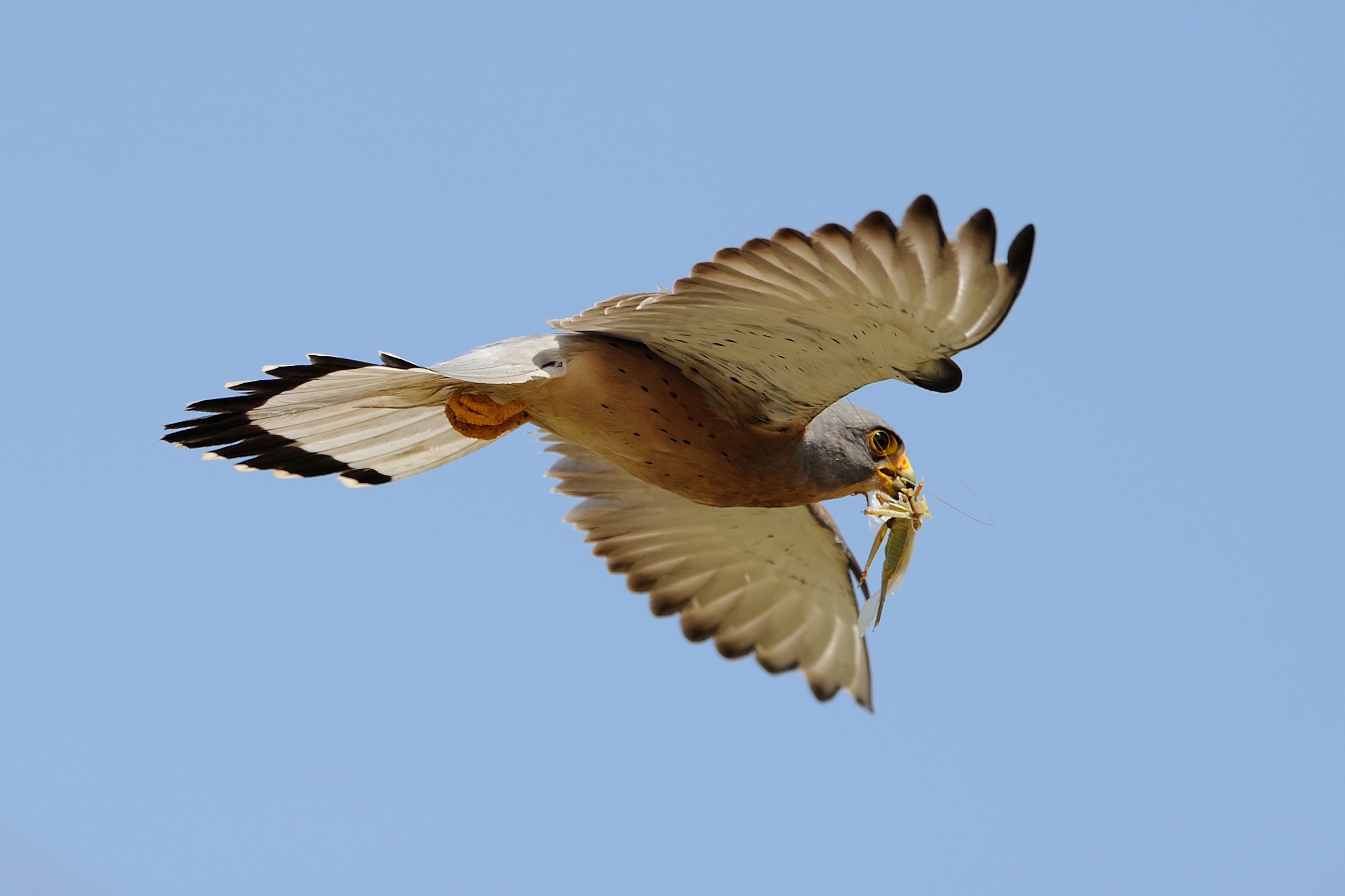 | Krištín, Anton; Bělka, Tomáš; Horal, David; Bino, Taulant Diet of the lesser kestrel Falco naumanni at post-breeding roosts in southern Albania Journal Article Raptor Journal, 14 (1), pp. 15-22, 2021, ISSN: 1337-3463. @article{Krištín2021, title = {Diet of the lesser kestrel \textit{Falco naumanni} at post-breeding roosts in southern Albania}, author = {Anton Krištín and Tomáš Bělka and David Horal and Taulant Bino}, doi = {https://doi.org/10.2478/srj-2020-0004}, issn = {1337-3463}, year = {2021}, date = {2021-04-30}, journal = {Raptor Journal}, volume = {14}, number = {1}, pages = {15-22}, abstract = {The lesser kestrel is an insectivorous and migratory falcon species, frequently using communal roosts in the post-breeding period in southern Europe. Using pellet analysis from two post-breeding roosting sites in southern Albania collected in August 2017, we identified 1539 prey items belonging to approximately 58 prey species, 20 families and 7 orders in 110 pellets from two sites. Invertebrates made up the major part of the diet spectrum (PNI = 99.8 %, PFI = 100 %). Invertebrate prey body size varied between 8 and 62 mm (mean 28.1 mm). Bush-crickets (Tettigoniidae) and locusts (Acrididae) were the most abundant and frequent prey groups (PNI = 33 % resp. 48.6 % and PFI = 97 % resp. 94 %). Within the bush-cricket family we could identify the species of genera Tettigonia, Decticus, Platycleis, Isophya and Metrioptera. The species of genera Calliptamus, Stenobothrus and Locusta belonged among the locust species identified in the food. Birds and mammals were found in pellets only occasionally. The prey composition was rather similar at both studied sites, while locusts (Acrididae) were more abundant at the Jorgucat site and bush-crickets (Tettigonioidea) at the Mollas site in the same time. Prey groups Scarabeidae beetles and other beetles (Coleoptera other) were more abundant and frequent at Mollas than at Jorgucat, and spiders were more frequent at Jorgucat. These results suggest that the high abundance of orthopterans and beetles in the food supply in certain localities is the main reason for selection and stable occupancy of these massive communal roosting sites by lesser kestrels in Albania.}, keywords = {}, pubstate = {published}, tppubtype = {article} } The lesser kestrel is an insectivorous and migratory falcon species, frequently using communal roosts in the post-breeding period in southern Europe. Using pellet analysis from two post-breeding roosting sites in southern Albania collected in August 2017, we identified 1539 prey items belonging to approximately 58 prey species, 20 families and 7 orders in 110 pellets from two sites. Invertebrates made up the major part of the diet spectrum (PNI = 99.8 %, PFI = 100 %). Invertebrate prey body size varied between 8 and 62 mm (mean 28.1 mm). Bush-crickets (Tettigoniidae) and locusts (Acrididae) were the most abundant and frequent prey groups (PNI = 33 % resp. 48.6 % and PFI = 97 % resp. 94 %). Within the bush-cricket family we could identify the species of genera Tettigonia, Decticus, Platycleis, Isophya and Metrioptera. The species of genera Calliptamus, Stenobothrus and Locusta belonged among the locust species identified in the food. Birds and mammals were found in pellets only occasionally. The prey composition was rather similar at both studied sites, while locusts (Acrididae) were more abundant at the Jorgucat site and bush-crickets (Tettigonioidea) at the Mollas site in the same time. Prey groups Scarabeidae beetles and other beetles (Coleoptera other) were more abundant and frequent at Mollas than at Jorgucat, and spiders were more frequent at Jorgucat. These results suggest that the high abundance of orthopterans and beetles in the food supply in certain localities is the main reason for selection and stable occupancy of these massive communal roosting sites by lesser kestrels in Albania. |
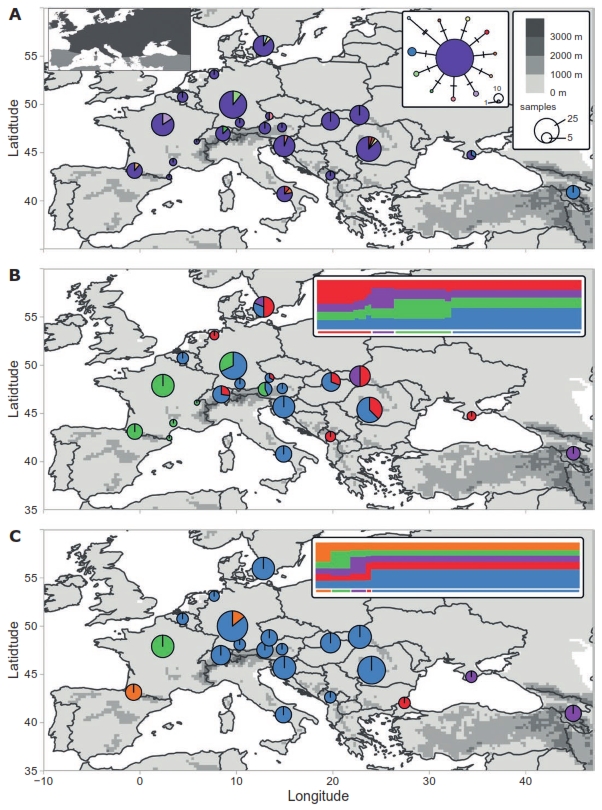 | Eberle, Jonas; Husemann, Martin; Doerfler, Inken; Werner, Ulrich; Müller, Jörg; Christophe, Bouget; Brin, Antoine; Gossner, Martin; Heilmann-Clausen, Jacob; Isacsson, Gunnar; Krištín, Anton; Lachat, Thibault; Larrieu, Laurent; Rigling, Andreas; Schmidl, Jürgen; Seibold, Sebastian; Vandekerkhove, Kris; Jan, Christian Habel Molecular biogeography of the fungus-dwelling saproxylic beetle Bolitophagus reticulatus indicates rapid expansion from glacial refugia Journal Article Biological Journal of the Linnean Society, 133 (3), pp. 766-778, 2021, ISSN: 0024-4066. @article{Eberle2021, title = {Molecular biogeography of the fungus-dwelling saproxylic beetle \textit{Bolitophagus reticulatus} indicates rapid expansion from glacial refugia }, author = {Jonas Eberle and Martin Husemann and Inken Doerfler and Ulrich Werner and Jörg Müller and Bouget Christophe and Antoine Brin and Martin Gossner and Jacob Heilmann-Clausen and Gunnar Isacsson and Anton Krištín and Thibault Lachat and Laurent Larrieu and Andreas Rigling and Jürgen Schmidl and Sebastian Seibold and Kris Vandekerkhove and Christian Habel Jan }, doi = {https://doi.org/10.1093/biolinnean/blab037}, issn = {0024-4066}, year = {2021}, date = {2021-04-23}, journal = {Biological Journal of the Linnean Society}, volume = {133}, number = {3}, pages = {766-778}, abstract = {The geographical distributions of species associated with European temperate broadleaf forests have been significantly influenced by glacial–interglacial cycles. During glacial periods, these species persisted in Mediterranean and extra-Mediterranean refugia and later, during interglacial periods, expanded northwards. The widespread saproxylic beetle Bolitophagus reticulatus depends closely on European temperate broadleaf forests. It usually develops in the tinder fungus Fomes fomentarius, a major decomposer of broadleaf-wood. We sampled B. reticulatus in sporocarps from European beech (Fagus sylvatica) and Oriental beech (Fagus orientalis) across Europe and the Caucasus region. We analysed mitochondrial gene sequences (cox1, cox2, cob) and 17 microsatellites to reconstruct the geographical distribution of glacial refugia and postglacial recolonization pathways. We found only marginal genetic differentiation of B. reticulatus, except for a significant split between populations of the Caucasus region and Europe. This indicates the existence of past refugia south of the Great Caucasus, and a contact zone with European populations in the Crimean region. Further potential refugia might have been located at the foothills of the Pyrenees and in the Balkan region. Our genetic data suggest a phalanx-wise recolonization of Europe, a reflection of the high mobility of B. reticulatus.}, keywords = {}, pubstate = {published}, tppubtype = {article} } The geographical distributions of species associated with European temperate broadleaf forests have been significantly influenced by glacial–interglacial cycles. During glacial periods, these species persisted in Mediterranean and extra-Mediterranean refugia and later, during interglacial periods, expanded northwards. The widespread saproxylic beetle Bolitophagus reticulatus depends closely on European temperate broadleaf forests. It usually develops in the tinder fungus Fomes fomentarius, a major decomposer of broadleaf-wood. We sampled B. reticulatus in sporocarps from European beech (Fagus sylvatica) and Oriental beech (Fagus orientalis) across Europe and the Caucasus region. We analysed mitochondrial gene sequences (cox1, cox2, cob) and 17 microsatellites to reconstruct the geographical distribution of glacial refugia and postglacial recolonization pathways. We found only marginal genetic differentiation of B. reticulatus, except for a significant split between populations of the Caucasus region and Europe. This indicates the existence of past refugia south of the Great Caucasus, and a contact zone with European populations in the Crimean region. Further potential refugia might have been located at the foothills of the Pyrenees and in the Balkan region. Our genetic data suggest a phalanx-wise recolonization of Europe, a reflection of the high mobility of B. reticulatus. |
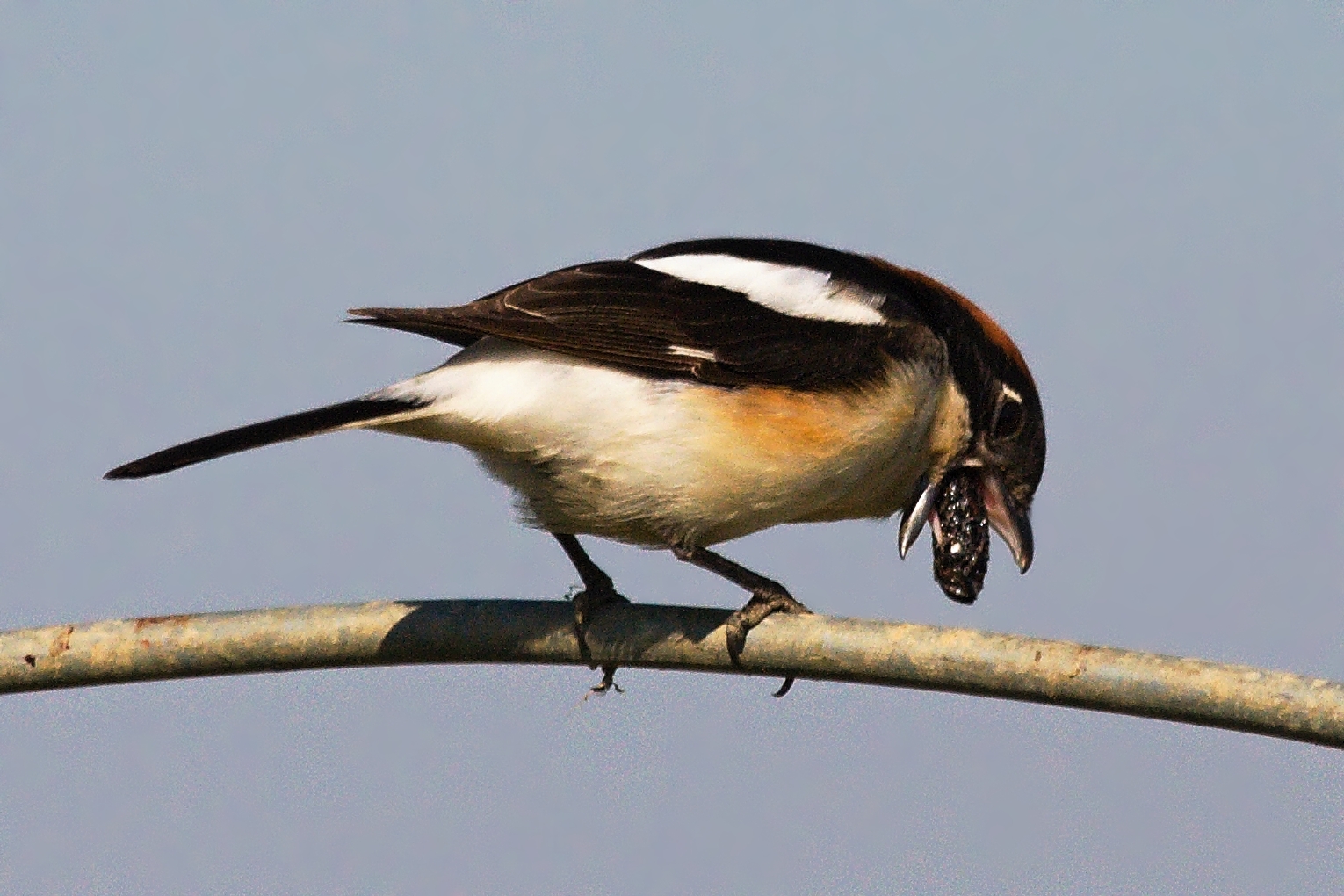 | Ján, Koči; Anton, Krištín On the occurrence and diet of a migrating Woodchat Shrike (Lanius senator) in Slovakia Journal Article Tichodroma, pp. 47-50, 2021, ISSN: 1337-026X. @article{Koči2020, title = {On the occurrence and diet of a migrating Woodchat Shrike (\textit{Lanius senator}) in Slovakia}, author = {Koči Ján and Krištín Anton}, doi = {https://doi.org/10.31577/tichodroma.2020.32.3}, issn = {1337-026X}, year = {2021}, date = {2021-01-01}, journal = {Tichodroma}, pages = {47-50}, abstract = {Occurrence and food composition on migration stopover is described in the regionally extinct breeding bird, the Woodchat Shrike in Slovakia. All vagrant birds in the last 20 years were observed in May in agricultural landscape, similarly to most vagrants of the species observed elsewhere in Central Europe. In the food of the individual bird at the migration stopover in W Slovakia there were found mainly the field crickets (Gryllus campestris; 31%) and carabids of the genus Pterostichus (19%) and beetles (Scarabeidae; 18%). Food composition and history of occurrence of the species in Slovakia and central Europe is discussed.}, keywords = {}, pubstate = {published}, tppubtype = {article} } Occurrence and food composition on migration stopover is described in the regionally extinct breeding bird, the Woodchat Shrike in Slovakia. All vagrant birds in the last 20 years were observed in May in agricultural landscape, similarly to most vagrants of the species observed elsewhere in Central Europe. In the food of the individual bird at the migration stopover in W Slovakia there were found mainly the field crickets (Gryllus campestris; 31%) and carabids of the genus Pterostichus (19%) and beetles (Scarabeidae; 18%). Food composition and history of occurrence of the species in Slovakia and central Europe is discussed. |
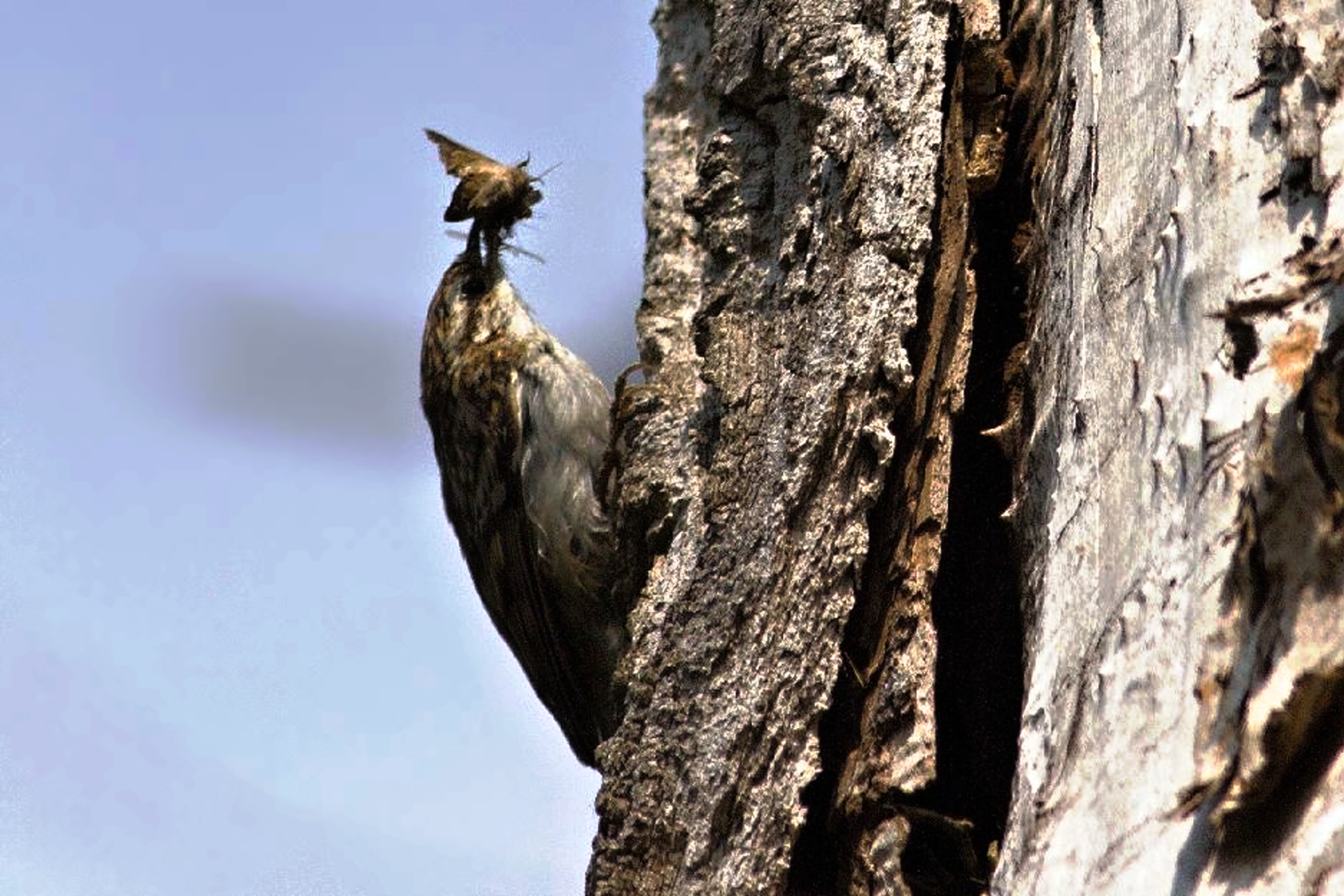 | Ján, Koči; Anton, Krištín On breeding density and unusual breeding behaviour of the Short-toed Treecreeper (Certhia brachydactyla) in Western Slovakia Journal Article Tichodroma, pp. 57-62, 2021, ISSN: 1337-026X. @article{Koči2020b, title = {On breeding density and unusual breeding behaviour of the Short-toed Treecreeper (\textit{Certhia brachydactyla}) in Western Slovakia}, author = {Koči Ján and Krištín Anton}, doi = {https://doi.org/10.31577/tichodroma.2020.32.7}, issn = {1337-026X}, year = {2021}, date = {2021-01-01}, journal = {Tichodroma}, pages = {57-62}, abstract = {Breeding and breeding density was studied in the Short-toed Treecreeper (Certhia brachydactyla) in two sites (riparian forest and park habitat) in Western Slovakia in 2015–2020. The breeding density was 3–5 nests (mean 4.2, i.e. 2.63 nests/10 ha, the highest 3.13/10 ha in 2018 and 2020) in riparian forest (16 ha study plot, near Piešťany town), using the nest mapping method, and 3–4 males (mean 3.2, i.e. 4.4 males/10 ha) in old park in Nitra town (7.2 ha), using the territories mapping method. The nests were built in trees 1–7.2 m high (mean 2.5 m, n = 32) in riparian forest and they were located mostly in poplar (15) and willow (4). Two nests were found only seven meters each of other and three adult individuals were feeding the young in these two nests. Hence, probably twof emales fed own young and one male fed young in both nests during two days before their fledging (April 25 and 26, 2020).}, keywords = {}, pubstate = {published}, tppubtype = {article} } Breeding and breeding density was studied in the Short-toed Treecreeper (Certhia brachydactyla) in two sites (riparian forest and park habitat) in Western Slovakia in 2015–2020. The breeding density was 3–5 nests (mean 4.2, i.e. 2.63 nests/10 ha, the highest 3.13/10 ha in 2018 and 2020) in riparian forest (16 ha study plot, near Piešťany town), using the nest mapping method, and 3–4 males (mean 3.2, i.e. 4.4 males/10 ha) in old park in Nitra town (7.2 ha), using the territories mapping method. The nests were built in trees 1–7.2 m high (mean 2.5 m, n = 32) in riparian forest and they were located mostly in poplar (15) and willow (4). Two nests were found only seven meters each of other and three adult individuals were feeding the young in these two nests. Hence, probably twof emales fed own young and one male fed young in both nests during two days before their fledging (April 25 and 26, 2020). |
 | Šťastný, Karel; Krištín, Anton Ptáci Česka a Slovenska: Ottův obrazový atlas Book Ottovo nakladatelství, 2021, ISBN: 978-80-7451-866-9. @book{Šťastný2021, title = {Ptáci Česka a Slovenska: Ottův obrazový atlas}, author = {Karel Šťastný and Anton Krištín}, isbn = {978-80-7451-866-9}, year = {2021}, date = {2021-01-01}, publisher = {Ottovo nakladatelství}, keywords = {}, pubstate = {published}, tppubtype = {book} } |
Babicová, Nina; Babicová, Ružena; Pavlíková, Jana; Krištín, Anton Unusual breeding of the Grey Heron (Ardea cinerea) and Crested Tit (Lophophanes cristatus) in urban environment Journal Article Tichodroma, 33 (1), 2021, ISSN: 2644-4992. @article{Babicov__2021, title = {Unusual breeding of the Grey Heron (Ardea cinerea) and Crested Tit (Lophophanes cristatus) in urban environment}, author = {Nina Babicová and Ružena Babicová and Jana Pavlíková and Anton Krištín}, url = {http://dx.doi.org/10.31577/TICHODROMA.2021.33.6}, doi = {10.31577/tichodroma.2021.33.6}, issn = {2644-4992}, year = {2021}, date = {2021-01-01}, journal = {Tichodroma}, volume = {33}, number = {1}, publisher = {Central Library of the Slovak Academy of Sciences}, keywords = {}, pubstate = {published}, tppubtype = {article} } | |
2020 |
|
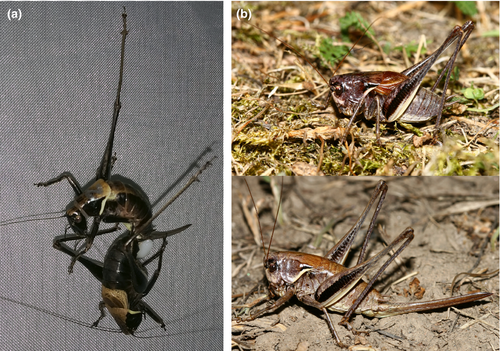 | Dorková, Martina; Krištín, Anton; Jarčuška, Benjamín; Kaňuch, Peter The mosaic distribution pattern of two sister bush-cricket species and the possible role of reproductive interference Journal Article Ecology and Evolution, 10 (5), pp. 2570-2578, 2020, ISSN: 2045-7758. @article{Dorková2020, title = {The mosaic distribution pattern of two sister bush-cricket species and the possible role of reproductive interference}, author = {Martina Dorková and Anton Krištín and Benjamín Jarčuška and Peter Kaňuch}, doi = {0.3390/f11030288}, issn = {2045-7758}, year = {2020}, date = {2020-02-08}, journal = {Ecology and Evolution}, volume = {10}, number = {5}, pages = {2570-2578}, abstract = {Reproductive interference can shape regional distribution patterns in closely related species, if prezygotic isolation barriers are weak. The study of such interaction could be more challenging in nuptial gift‐giving species due to the direct nutritional effects on both sexes of both species during copulation. We mapped the distribution of two sister bush‐cricket species, Pholidoptera aptera and Pholidoptera transsylvanica, at the northern margin of their overlapping ranges in Europe, and with a behavioral experiment, we tested the possibility of heterospecific mating. We found a very rare coexistence of species locally (0.5%, n = 391 sites) with mostly mutually exclusive distribution patterns, resulting in a mosaic pattern of sympatry, whereas they occupied the same climate niche in forest‐dominated mountain landscape. Over 14 days of a mating experiment with seven mixed groups of conspecifics and heterospecifics (n = 56 individuals in total), the number of received spermatophores per female was 3–6 in P. aptera and 1–7 in P. transsylvanica. In total, we found 8.1% of heterospecific copulations (n = 99 transferred spermatophores with genetic identification of the donor species), while we also confirmed successful transfer of heterospecific sperms into a female's reproductive system. Because bush‐cricket females also obtain required nutrition from a heterospecific spermatophylax what should increase their fitness and fecundity, we suggest that their flexibility to mate with heterospecifics is beneficial and drives reproductive interference. This may substantially limit the reproductive success of the less frequent species (P. transsylvanica), coupled with eventual detrimental effects from hybridization, and result in the competitive exclusion of that species from their areas of coexistence.}, keywords = {}, pubstate = {published}, tppubtype = {article} } Reproductive interference can shape regional distribution patterns in closely related species, if prezygotic isolation barriers are weak. The study of such interaction could be more challenging in nuptial gift‐giving species due to the direct nutritional effects on both sexes of both species during copulation. We mapped the distribution of two sister bush‐cricket species, Pholidoptera aptera and Pholidoptera transsylvanica, at the northern margin of their overlapping ranges in Europe, and with a behavioral experiment, we tested the possibility of heterospecific mating. We found a very rare coexistence of species locally (0.5%, n = 391 sites) with mostly mutually exclusive distribution patterns, resulting in a mosaic pattern of sympatry, whereas they occupied the same climate niche in forest‐dominated mountain landscape. Over 14 days of a mating experiment with seven mixed groups of conspecifics and heterospecifics (n = 56 individuals in total), the number of received spermatophores per female was 3–6 in P. aptera and 1–7 in P. transsylvanica. In total, we found 8.1% of heterospecific copulations (n = 99 transferred spermatophores with genetic identification of the donor species), while we also confirmed successful transfer of heterospecific sperms into a female's reproductive system. Because bush‐cricket females also obtain required nutrition from a heterospecific spermatophylax what should increase their fitness and fecundity, we suggest that their flexibility to mate with heterospecifics is beneficial and drives reproductive interference. This may substantially limit the reproductive success of the less frequent species (P. transsylvanica), coupled with eventual detrimental effects from hybridization, and result in the competitive exclusion of that species from their areas of coexistence. |
 | Černecký, Ján; Lešo, Peter; Ridzoň, Jozef; Krištín, Anton; Karaska, Dušan; Darolová, Alžbeta; Fulín, Miroslav; Chavko, Jozef; Bohuš, Mirko; Krajniak, Dušan; Ďuricová, Viktória; Lešová, Andrea; Čuláková, Jana; Saxa, Andrej; Durkošová, Jana; Andráš, Peter Stav ochrany vtáctva na Slovensku v rokoch 2013 –2018 Book Štátna ochrana prírody SR, 2020, ISBN: 978–80–8184–084–5. @book{Černecký2020b, title = {Stav ochrany vtáctva na Slovensku v rokoch 2013 –2018}, author = {Ján Černecký and Peter Lešo and Jozef Ridzoň and Anton Krištín and Dušan Karaska and Alžbeta Darolová and Miroslav Fulín and Jozef Chavko and Mirko Bohuš and Dušan Krajniak and Viktória Ďuricová and Andrea Lešová and Jana Čuláková and Andrej Saxa and Jana Durkošová and Peter Andráš}, isbn = {978–80–8184–084–5}, year = {2020}, date = {2020-01-01}, publisher = {Štátna ochrana prírody SR}, keywords = {}, pubstate = {published}, tppubtype = {book} } |
 | Krištín, Anton; Jarčuška, Benjamín; Kaňuch, Peter An annotated checklist of crickets, grasshoppers and their allies (Orthoptera) in Slovakia Journal Article Zootaxa, 4869 (2), pp. 207-241, 2020, ISSN: 1175-5334. @article{Krištín2020, title = {An annotated checklist of crickets, grasshoppers and their allies (Orthoptera) in Slovakia}, author = {Anton Krištín and Benjamín Jarčuška and Peter Kaňuch}, doi = {10.11646/zootaxa.4869.2.3}, issn = {1175-5334}, year = {2020}, date = {2020-01-01}, journal = {Zootaxa}, volume = {4869}, number = {2}, pages = {207-241}, abstract = {The first annotated checklist of ensiferan and caeliferan Orthoptera of Slovakia is presented. Altogether, we found 129 species (59 Ensifera, 70 Caelifera) in the fauna of Slovakia, based on a critical revision of museum collections, all records published since 1826 and our own unpublished data from mapping in 1994–2019 (~2000 sites located in 97.5% of the mapping grid cells). Forty-four species reach the limit of their distributional range within the country, and 31 have their northern limit there. Four species are endemic to Slovakia. In total, 11 species were erroneously reported from the country and are not included in this checklist. The relatively rich species spectrum reflects the diversity of habitats in an area of about 50 thousand km2 and elevations from 94 to 2,655 masl. We found 30 species exclusive for the Pannonian and 18 for the Alpine biogeographical region in the study area. We emphasize changes compared to previous species lists published in 1977 and 1999, when nine species were first recorded after 1999, and eight other species have been missing for more than 50 years. Distributional patterns, accompanied by site maps, are commented for 42 species. Taxonomic, nomenclatural and zoogeographical problems are discussed for a further 23 species. Based on the actual IUCN Red List criteria, we assessed all 129 species. The species were red-listed as follows: regional extinct (Celes variabilis), critically endangered (Isophya beybienkoi, I. costata, Poecilimon fussii, Pachytrachis gracilis, Saga pedo, Paracaloptenus caloptenoides, Acrotylus insubricus, Stenobothrus fischeri), endangered (Poecilimon intermedius, Gampsocleis glabra, Pholidoptera frivaldszkyi, Myrmeleotettix antennatus), vulnerable (nine species), near threatened (18) and data deficient (12). A brief account of the Orthoptera research history in Slovakia is outlined.}, keywords = {}, pubstate = {published}, tppubtype = {article} } The first annotated checklist of ensiferan and caeliferan Orthoptera of Slovakia is presented. Altogether, we found 129 species (59 Ensifera, 70 Caelifera) in the fauna of Slovakia, based on a critical revision of museum collections, all records published since 1826 and our own unpublished data from mapping in 1994–2019 (~2000 sites located in 97.5% of the mapping grid cells). Forty-four species reach the limit of their distributional range within the country, and 31 have their northern limit there. Four species are endemic to Slovakia. In total, 11 species were erroneously reported from the country and are not included in this checklist. The relatively rich species spectrum reflects the diversity of habitats in an area of about 50 thousand km2 and elevations from 94 to 2,655 masl. We found 30 species exclusive for the Pannonian and 18 for the Alpine biogeographical region in the study area. We emphasize changes compared to previous species lists published in 1977 and 1999, when nine species were first recorded after 1999, and eight other species have been missing for more than 50 years. Distributional patterns, accompanied by site maps, are commented for 42 species. Taxonomic, nomenclatural and zoogeographical problems are discussed for a further 23 species. Based on the actual IUCN Red List criteria, we assessed all 129 species. The species were red-listed as follows: regional extinct (Celes variabilis), critically endangered (Isophya beybienkoi, I. costata, Poecilimon fussii, Pachytrachis gracilis, Saga pedo, Paracaloptenus caloptenoides, Acrotylus insubricus, Stenobothrus fischeri), endangered (Poecilimon intermedius, Gampsocleis glabra, Pholidoptera frivaldszkyi, Myrmeleotettix antennatus), vulnerable (nine species), near threatened (18) and data deficient (12). A brief account of the Orthoptera research history in Slovakia is outlined. |
2019 |
|
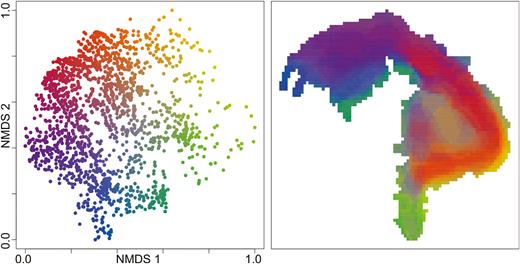 | Jarčuška, Benjamín; Kaňuch, Peter; Naďo, Ladislav; Krištín, Anton Quantitative biogeography of Orthoptera does not support classical qualitative regionalization of the Carpathian Mountains Journal Article Biological Journal of the Linnean Society : a journal of evolution, 128 (4), pp. 887-900, 2019, ISSN: 0024-4066. @article{Jarčuška2019, title = {Quantitative biogeography of Orthoptera does not support classical qualitative regionalization of the Carpathian Mountains}, author = {Benjamín Jarčuška and Peter Kaňuch and Ladislav Naďo and Anton Krištín}, doi = {10.1093/biolinnean/blz143}, issn = {0024-4066}, year = {2019}, date = {2019-10-11}, journal = {Biological Journal of the Linnean Society : a journal of evolution}, volume = {128}, number = {4}, pages = {887-900}, abstract = {The first biogeographical division of the Carpathians, the second largest mountain range in Europe, was based on qualitative observational floristic data > 100 years ago and has also been applied for the regional zoogeography. In this study, the recent availability of detailed quantitative data allowed us to perform a more powerful evaluation of the classical biogeographical regions of the area. Thus, we analysed updated distribution patterns of 137 Orthoptera species native to the Carpathian Mountains and, by using published species range maps, we compiled data on species presence or absence within 2576 cells of a 10 km × 10 km universal transverse mercator grid in the area. Pattern analysis of the data was based on non-metric multidimensional scaling and clustering using six different algorithms applied to a β sim dissimilarity matrix. The unweighted pair-group method using arithmetic averages, which gave the best performance in the analysis of species turnover, delineated four regions. Environmental variables and species richness were used in logistic regression as predictors of delineated clusters, and indicator species were identified for each of the inferred regions. The pattern can be explained, in part, by environmental variables and species richness (34.2%) and was also influenced by connections with the orthopterofauna from adjacent areas. The observed discrepancy between regionalization based on expert knowledge and the pattern revealed using quantitative data provides a warning that the biogeography of the Carpathians might also have been revised in other taxa, where only classical qualitative regionalization exists.}, keywords = {}, pubstate = {published}, tppubtype = {article} } The first biogeographical division of the Carpathians, the second largest mountain range in Europe, was based on qualitative observational floristic data > 100 years ago and has also been applied for the regional zoogeography. In this study, the recent availability of detailed quantitative data allowed us to perform a more powerful evaluation of the classical biogeographical regions of the area. Thus, we analysed updated distribution patterns of 137 Orthoptera species native to the Carpathian Mountains and, by using published species range maps, we compiled data on species presence or absence within 2576 cells of a 10 km × 10 km universal transverse mercator grid in the area. Pattern analysis of the data was based on non-metric multidimensional scaling and clustering using six different algorithms applied to a β sim dissimilarity matrix. The unweighted pair-group method using arithmetic averages, which gave the best performance in the analysis of species turnover, delineated four regions. Environmental variables and species richness were used in logistic regression as predictors of delineated clusters, and indicator species were identified for each of the inferred regions. The pattern can be explained, in part, by environmental variables and species richness (34.2%) and was also influenced by connections with the orthopterofauna from adjacent areas. The observed discrepancy between regionalization based on expert knowledge and the pattern revealed using quantitative data provides a warning that the biogeography of the Carpathians might also have been revised in other taxa, where only classical qualitative regionalization exists. |
 | Korňan, Martin; Svitok, Marek; Krištín, Anton Ecology and Evolution, 9 (5), pp. 8541-8554, 2019, ISBN: 2045-7758. @article{Korňan2019, title = {Null model analyses of temporal patterns of bird assemblages and their foraging guilds revealed the predominance of positive and random associations}, author = {Martin Korňan and Marek Svitok and Anton Krištín}, doi = {10.1002/ece3.5372}, isbn = {2045-7758}, year = {2019}, date = {2019-06-20}, journal = {Ecology and Evolution}, volume = {9}, number = {5}, pages = {8541-8554}, abstract = {Patterns of species associations have been commonly used to infer interactions among species. If species positively co‐occur, they may form predominantly neutral assemblages, and such patterns suggest a relatively weak role for compensatory dynamics. The main objective of this study was to test this prediction on temporal samples of bird assemblages (n = 19, 10–57 years) by the presence/absence and quantitative null models on assemblage and guild levels. These null model outcomes were further analyzed to evaluate the effects of various data set characteristics on the outcomes of the null models. The analysis of two binary null models in combination with three association indices revealed 20% with significant aggregations, 61% with random associations, and only 19% with significant segregations (n = 95 simulations). The results of the quantitative null model simulations detected more none‐random associations: 61% aggregations, 6% random associations, and 33% segregations (n = 114 simulations). Similarly, quantitative analyses on guild levels showed 58% aggregations, 20% segregations, and 22% random associations (n = 450 simulations). Bayesian GLMs detected that the outcomes of the binary and quantitative null models applied to the assemblage analyses were significantly related to census plot size, whereas the outcomes of the quantitative analyses were also related to the mean population densities of species in the data matrices. In guild‐level analyses, only 9% of the GLMs showed a significant influence of matrix properties (plot size, matrix size, species richness, and mean species population densities) on the null model outcomes. The results did not show the prevalence of negative associations that would have supported compensatory dynamics. Instead, we assume that a similar response of the majority of species to climate‐driven and stochastic factors may be responsible for the revealed predominance of positive associations.}, keywords = {}, pubstate = {published}, tppubtype = {article} } Patterns of species associations have been commonly used to infer interactions among species. If species positively co‐occur, they may form predominantly neutral assemblages, and such patterns suggest a relatively weak role for compensatory dynamics. The main objective of this study was to test this prediction on temporal samples of bird assemblages (n = 19, 10–57 years) by the presence/absence and quantitative null models on assemblage and guild levels. These null model outcomes were further analyzed to evaluate the effects of various data set characteristics on the outcomes of the null models. The analysis of two binary null models in combination with three association indices revealed 20% with significant aggregations, 61% with random associations, and only 19% with significant segregations (n = 95 simulations). The results of the quantitative null model simulations detected more none‐random associations: 61% aggregations, 6% random associations, and 33% segregations (n = 114 simulations). Similarly, quantitative analyses on guild levels showed 58% aggregations, 20% segregations, and 22% random associations (n = 450 simulations). Bayesian GLMs detected that the outcomes of the binary and quantitative null models applied to the assemblage analyses were significantly related to census plot size, whereas the outcomes of the quantitative analyses were also related to the mean population densities of species in the data matrices. In guild‐level analyses, only 9% of the GLMs showed a significant influence of matrix properties (plot size, matrix size, species richness, and mean species population densities) on the null model outcomes. The results did not show the prevalence of negative associations that would have supported compensatory dynamics. Instead, we assume that a similar response of the majority of species to climate‐driven and stochastic factors may be responsible for the revealed predominance of positive associations. |
Kehoe, Laura; Reis, Tiago; Virah-Sawmy, Malika; Balmford, Andrew; Kuemmerle, Tobias; Krištín, Anton; Jarčuška, Benjamín; Kanka, Róbert Make EU trade with Brazil sustainable Journal Article Science, 364 (6438), 2019, ISSN: 0036-8075. @article{Kehoe2019, title = {Make EU trade with Brazil sustainable}, author = {Laura Kehoe and Tiago Reis and Malika Virah-Sawmy and Andrew Balmford and Tobias Kuemmerle and Anton Krištín and Benjamín Jarčuška and Róbert Kanka}, doi = {10.1126/science.aaw8276}, issn = {0036-8075}, year = {2019}, date = {2019-04-26}, journal = {Science}, volume = {364}, number = {6438}, keywords = {}, pubstate = {published}, tppubtype = {article} } | |
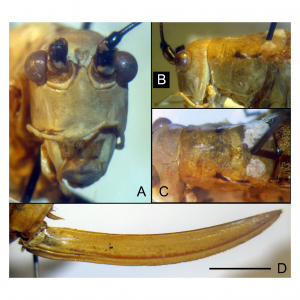 | Heller, K-G; Hemp, C; Massa, B; Rakotondranary, J; Krištín, A Notes on a small collection of phaneropterine bush-crickets (Insecta: Orthoptera: Tettigonioidea) from Central and Southern Madagascar with the description of two new species Journal Article Zootaxa, 4563 (2), pp. 297–310, 2019. @article{Heller2019, title = {Notes on a small collection of phaneropterine bush-crickets (Insecta: Orthoptera: Tettigonioidea) from Central and Southern Madagascar with the description of two new species}, author = {K-G Heller and C Hemp and B Massa and J Rakotondranary and A Krištín}, year = {2019}, date = {2019-04-16}, journal = {Zootaxa}, volume = {4563}, number = {2}, pages = {297–310}, keywords = {}, pubstate = {published}, tppubtype = {article} } |
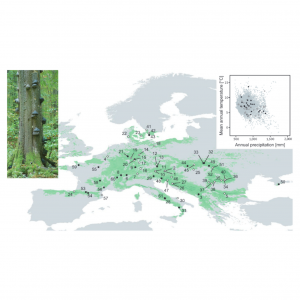 | Friess, N; Müller, J C; Abrego, N; Aramendi, P; Bässler, C; Bouget, Ch.; Brin, A; Bussler, H; Georgiev, K; Gil, R; Gossner, M M; Heilmann-Clausen, J; Isaacson, G; Krištín, A; Lachat, T; Larrieu, L; Los, S; Magnanou, E; Maringer, A; Mergner, U; Mikolas, M; Opgenoorth, L; Schmidl, J; Svoboda, M; Thorn, S; Vrezec, A; Vanderkhoven, K; Winter, B; Wagner, T; Zapponi, L; Brandl, R; Seibold, S The species-rich arthropod communities in fungal fruitbodies are weakly structured by climate and biogeography across European beech forests Journal Article Diversity and Distributions, 2019. @article{Friess2018, title = {The species-rich arthropod communities in fungal fruitbodies are weakly structured by climate and biogeography across European beech forests}, author = {N. Friess and J.C. Müller and N. Abrego and P. Aramendi and C. Bässler and Ch. Bouget and A. Brin and H. Bussler and K. Georgiev and R. Gil and M.M. Gossner and J. Heilmann-Clausen and G. Isaacson and A. Krištín and T. Lachat and L. Larrieu and S. Los and E. Magnanou and A. Maringer and U. Mergner and M. Mikolas and L. Opgenoorth and J. Schmidl and M. Svoboda and S. Thorn and A. Vrezec and K. Vanderkhoven and B. Winter and T. Wagner and L. Zapponi and R. Brandl and S. Seibold}, doi = {10.1111/ddi.12882}, year = {2019}, date = {2019-01-01}, journal = {Diversity and Distributions}, keywords = {}, pubstate = {published}, tppubtype = {article} } |
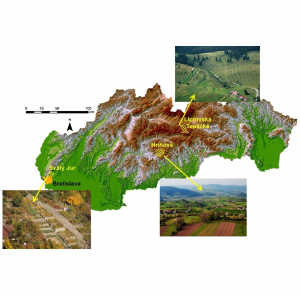 | Dobrovodská, Marta; Kanka, Róbert; David, Stanislav; Kollár, Jozef; Špulerová, Jana; Štefunková, Dagmar; Mojses, Matej; Petrovič, František; Krištín, Anton; Stašiov, Slavomír; Halada, Ľuboš; Gajdoš, Peter Assessment of the biocultural value of traditional agricultural landscape on a plot‐by‐plot level: case studies from Slovakia Journal Article Biodiversity and Conservation, 28 , pp. 2615–2645, 2019. @article{Dobrovodská2019, title = {Assessment of the biocultural value of traditional agricultural landscape on a plot‐by‐plot level: case studies from Slovakia}, author = {Marta Dobrovodská and Róbert Kanka and Stanislav David and Jozef Kollár and Jana Špulerová and Dagmar Štefunková and Matej Mojses and František Petrovič and Anton Krištín and Slavomír Stašiov and Ľuboš Halada and Peter Gajdoš}, doi = {https://doi.org/10.1007/s10531-019-01784-x}, year = {2019}, date = {2019-01-01}, journal = {Biodiversity and Conservation}, volume = {28}, pages = {2615–2645}, abstract = {In the past, historical rural Europe possessed a broad range of biological and cultural values due to landscape diversity and the use of low-impact agricultural practices. It’s typical feature was the presence of varied semi-natural habitats. The massive socioeconomic changes of the 20th caused significant loss of these habitats. The term traditional agricultural landscape (TAL) denotes the surviving remnants of this landscape heritage. Despite its exceptional value, conservation practice for TAL is very poor. The concept of “biocul- tural diversity” provides linkages between cultural and biological diversity and opens up new possibilities for practical conservation of TAL. In our work we have tried to develop and apply this concept. The main goal was to design an approach for assessment of bio- cultural value at plot level and apply it to the three different traditional rural landscapes in Slovakia—Liptovská Teplička village, Hriňová town and Svätý Jur town, representing the most typical TAL in Slovakia. The approach was based on determination of a meas- urable link between ecological and cultural–historical significance. The concept of ecological significance, assessed by comparing the results of the monitoring and evaluation of taxonomic diversity and nature conservation value of vascular plant communities and selected ground-dwelling invertebrate groups (Araneae, Diplopoda, Orthoptera), was complemented by evaluation of cultural–historical significance, leading to the identification of biocultural values in TAL. These evaluations were performed on productive plots of arable lands, grasslands, vineyards, and orchards, and unproductive agrarian landforms (mostly field margins) such as terraced slopes, terraced steps, heaps, mounds and unconsolidated walls.}, keywords = {}, pubstate = {published}, tppubtype = {article} } In the past, historical rural Europe possessed a broad range of biological and cultural values due to landscape diversity and the use of low-impact agricultural practices. It’s typical feature was the presence of varied semi-natural habitats. The massive socioeconomic changes of the 20th caused significant loss of these habitats. The term traditional agricultural landscape (TAL) denotes the surviving remnants of this landscape heritage. Despite its exceptional value, conservation practice for TAL is very poor. The concept of “biocul- tural diversity” provides linkages between cultural and biological diversity and opens up new possibilities for practical conservation of TAL. In our work we have tried to develop and apply this concept. The main goal was to design an approach for assessment of bio- cultural value at plot level and apply it to the three different traditional rural landscapes in Slovakia—Liptovská Teplička village, Hriňová town and Svätý Jur town, representing the most typical TAL in Slovakia. The approach was based on determination of a meas- urable link between ecological and cultural–historical significance. The concept of ecological significance, assessed by comparing the results of the monitoring and evaluation of taxonomic diversity and nature conservation value of vascular plant communities and selected ground-dwelling invertebrate groups (Araneae, Diplopoda, Orthoptera), was complemented by evaluation of cultural–historical significance, leading to the identification of biocultural values in TAL. These evaluations were performed on productive plots of arable lands, grasslands, vineyards, and orchards, and unproductive agrarian landforms (mostly field margins) such as terraced slopes, terraced steps, heaps, mounds and unconsolidated walls. |
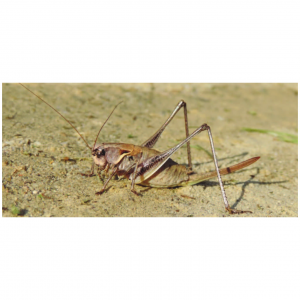 | Krištín, Anton; Jarčuška, Benjamín; Dorková, Martina; Kaňuch, Peter First record of Pholidoptera transsylvanica (Orthoptera, Tettigoniidae) in Poland Journal Article Entomological News, 128 (4), pp. 377, 2019. @article{Krištín2019, title = {First record of Pholidoptera transsylvanica (Orthoptera, Tettigoniidae) in Poland}, author = {Anton Krištín and Benjamín Jarčuška and Martina Dorková and Peter Kaňuch}, year = {2019}, date = {2019-01-01}, journal = {Entomological News}, volume = {128}, number = {4}, pages = {377}, keywords = {}, pubstate = {published}, tppubtype = {article} } |
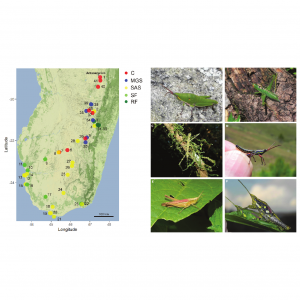 | Krištín, Anton; Heller, Klaus-Gerhard; Zemko, Milan; Rakotondranary, Jacques; Jarčuška, Benjamín Assemblages of orthopteroid insects along environmental gradients in central and southern Madagascar Journal Article Journal of Orthoptera Research, 28 (2), pp. 155-166, 2019. @article{Krištín2019b, title = {Assemblages of orthopteroid insects along environmental gradients in central and southern Madagascar}, author = {Anton Krištín and Klaus-Gerhard Heller and Milan Zemko and Jacques Rakotondranary and Benjamín Jarčuška}, year = {2019}, date = {2019-01-01}, journal = {Journal of Orthoptera Research}, volume = {28}, number = {2}, pages = {155-166}, keywords = {}, pubstate = {published}, tppubtype = {article} } |
2018 |
|
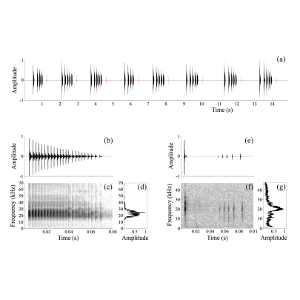 | Iorgu, I S; Krištín, A; Szövényi, G; Kaňuch, P; Jarčuška, B; Sahlean, T; Iorgu, E I; Orci, K M Bioacoustics , pp. 1-14, 2018. @article{IORGU2017, title = {Distinctive male–female acoustic duetting supports the specific status of \textit{Isophya fatrensis}, a West-Carpathian endemic bush-cricket (Insecta: Orthoptera: Tettigoniidae: Phaneropterinae)}, author = {I.S. Iorgu and A. Krištín and G. Szövényi and P. Kaňuch and B. Jarčuška and T. Sahlean and E.I. Iorgu and K.M. Orci}, url = {http://www.tandfonline.com/doi/abs/10.1080/09524622.2016.1272005?journalCode=tbio20}, doi = {DOI: 10.1080/09524622.2016.1272005 }, year = {2018}, date = {2018-02-01}, journal = {Bioacoustics }, pages = {1-14}, keywords = {}, pubstate = {published}, tppubtype = {article} } |
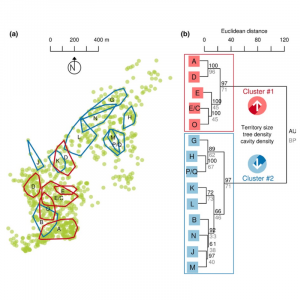 | Naďo, L; Kašová, M; Krištín, A; Kaňuch, P Cooperative nest‐defence behaviour and territory quality in a resident and socially monogamous passerine Journal Article Ethology, 124 (7), pp. 514-526, 2018, ISSN: 1439-0310. @article{Naďo2018, title = {Cooperative nest‐defence behaviour and territory quality in a resident and socially monogamous passerine}, author = {L. Naďo and M. Kašová and A. Krištín and P. Kaňuch}, doi = {10.1111/eth.12755}, issn = {1439-0310}, year = {2018}, date = {2018-01-01}, journal = {Ethology}, volume = {124}, number = {7}, pages = {514-526}, abstract = {Nest defence is a fundamental aspect of parental care in secondary cavity‐nesting birds, and predation or competition for nesting sites can involve different defensive behaviours. Because habitat quality determines breeding success, we were interested in whether breeding pairs of the Eurasian nuthatch, Sitta europaea, established in more favourable environment also manifest higher probability of cooperative behaviour during their nest‐site defence. To explore this relationship, we quantified behavioural displays of both parents and analysed activity budget ethogram data from simulated territorial intrusions performed in the chick‐feeding phase with one conspecific and two different heterospecific stimuli (dummies of nuthatch, starling and woodpecker). We found that paired individuals shared their roles during nest‐site defence to a considerable extent. Males had a significantly higher number of attacks on intruders than females, and females performed more threat displays and controls of the brood than males. Multinomial analysis of the cooperative behaviour suggested that pairs in a high‐quality territory had higher probability of reciprocal substitution of different roles towards a balance between attacks, threat displays and nest controls. Contrary to this, pairs in a low‐quality territory had less likely pairwise combinations of simultaneous behavioural states that are associated with effective nest‐site defence. The difference in response probability according to territory quality was, however, highly variable in view of the stimulus that was used in simulated territorial intrusion. Because individual roles and the complex behavioural repertoire of pairs altered in response to territory quality and potential nest‐site competitor or brood predator, our results suggest that the cooperative nest‐defence behaviour could be linked to the breeding success of this year‐round territorial species living in a heterogeneous forest habitat. }, keywords = {}, pubstate = {published}, tppubtype = {article} } Nest defence is a fundamental aspect of parental care in secondary cavity‐nesting birds, and predation or competition for nesting sites can involve different defensive behaviours. Because habitat quality determines breeding success, we were interested in whether breeding pairs of the Eurasian nuthatch, Sitta europaea, established in more favourable environment also manifest higher probability of cooperative behaviour during their nest‐site defence. To explore this relationship, we quantified behavioural displays of both parents and analysed activity budget ethogram data from simulated territorial intrusions performed in the chick‐feeding phase with one conspecific and two different heterospecific stimuli (dummies of nuthatch, starling and woodpecker). We found that paired individuals shared their roles during nest‐site defence to a considerable extent. Males had a significantly higher number of attacks on intruders than females, and females performed more threat displays and controls of the brood than males. Multinomial analysis of the cooperative behaviour suggested that pairs in a high‐quality territory had higher probability of reciprocal substitution of different roles towards a balance between attacks, threat displays and nest controls. Contrary to this, pairs in a low‐quality territory had less likely pairwise combinations of simultaneous behavioural states that are associated with effective nest‐site defence. The difference in response probability according to territory quality was, however, highly variable in view of the stimulus that was used in simulated territorial intrusion. Because individual roles and the complex behavioural repertoire of pairs altered in response to territory quality and potential nest‐site competitor or brood predator, our results suggest that the cooperative nest‐defence behaviour could be linked to the breeding success of this year‐round territorial species living in a heterogeneous forest habitat. |
2017 |
|
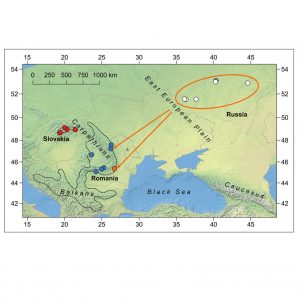 | Kaňuch, P; Dorková, M; Mikhailenko, A P; Polumordvinov, O A; Jarčuška, B; Krištín, A ZooKeys, 665 , pp. 85-92, 2017. @article{P.2017, title = {Isolated populations of the bush-cricket \textit{Pholidoptera frivaldszkyi} (Orthoptera, Tettigoniidae) in Russia suggest a disjunct area of the species distribution}, author = {P. Kaňuch and M. Dorková and A.P. Mikhailenko and O.A. Polumordvinov and B. Jarčuška and A. Krištín}, editor = {Z.F. Montealegre}, url = {https://zookeys.pensoft.net/article/12339/list/8/}, doi = {10.3897/zookeys.665.12339}, year = {2017}, date = {2017-04-04}, journal = {ZooKeys}, volume = {665}, pages = {85-92}, abstract = {Phylogenetic analysis and assessment of the species status of mostly isolated populations of Pholidoptera frivaldszkyi in south-western Russia occurring far beyond the accepted area of the species distribution in the Carpathian-Balkan region were performed. Using the mitochondrial DNA cytochrome c oxidase subunit I gene fragment, we found a very low level of genetic diversity in these populations. Phylogeographic reconstruction did not support recent introduction events but rather historical range fragmentation. The grouping of the Russian and Romanian haplotypes in a distinct phylogenetic clade suggests that the pre-glacial range of P. frivaldszkyi had extended towards the Ponto-Caspian region, with considerable gene flow between different refugia. However, post-glacial northward expansion of the species from supposed Caucasus refugia contributed most likely to the current disjunct distribution of this relict-like bush-cricket.}, keywords = {}, pubstate = {published}, tppubtype = {article} } Phylogenetic analysis and assessment of the species status of mostly isolated populations of Pholidoptera frivaldszkyi in south-western Russia occurring far beyond the accepted area of the species distribution in the Carpathian-Balkan region were performed. Using the mitochondrial DNA cytochrome c oxidase subunit I gene fragment, we found a very low level of genetic diversity in these populations. Phylogeographic reconstruction did not support recent introduction events but rather historical range fragmentation. The grouping of the Russian and Romanian haplotypes in a distinct phylogenetic clade suggests that the pre-glacial range of P. frivaldszkyi had extended towards the Ponto-Caspian region, with considerable gene flow between different refugia. However, post-glacial northward expansion of the species from supposed Caucasus refugia contributed most likely to the current disjunct distribution of this relict-like bush-cricket. |
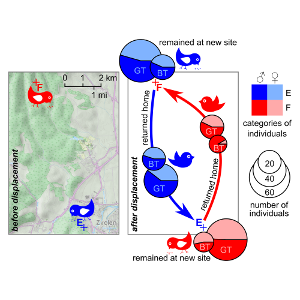 | Krištín, A; Kaňuch, P Stay or go? Strong winter feeding site fidelity in small woodland passerines revealed by a homing experiment. Journal Article Journal of Ornithology, 158 (1), pp. 53-61, 2017, ISSN: 0021-8375. @article{KRIŠTÍN2017, title = {Stay or go? Strong winter feeding site fidelity in small woodland passerines revealed by a homing experiment. }, author = {A. Krištín and P. Kaňuch}, url = {https://link.springer.com/article/10.1007/s10336-016-1362-2}, doi = {https://doi.org/10.1007/s10336-016-1362-2}, issn = {0021-8375}, year = {2017}, date = {2017-01-01}, journal = {Journal of Ornithology}, volume = {158}, number = {1}, pages = {53-61}, abstract = {Many birds exhibit territoriality, which is vital for obtaining resources for survival. Non-migratory birds maintain larger territories in winter than during reproduction, but the degree of their fidelity to these winter home ranges is less well-known. We evaluated the homing success and time of return to home through a field experiment in which we trapped and displaced 1239 individual birds of two tit species, Great Tit (Parus major) and Blue Tit (Cyanistes caeruleus), and retrapped 267 of them over two winters (a total of 40 trapping sessions). Displacement of the birds between two sites 7.8 km apart revealed strong fidelity to the winter home range in both species; birds returned on average within 4 weeks. Greater homing success was found in Blue Tits than in Great Tits (45.7 vs. 32.5 % retraps). More individuals returned home from an ecotone site, which included gardens with feeders, than from a forest site (40.9 vs. 29.2 %). Blue Tits homed approximately 1 week more quickly than Great Tits, and similar mean differences were observed when comparing males with females of both species using Kaplar–Meier survival functions. A parametric survival regression model indicated that the difference in homing time between species was not significant, but males of both species returned significantly sooner than females. Moreover, birds that originated from a site with greater food supply homed more quickly, and interaction of sex and site also showed a significant effect in this model. Our evidence suggests that winter territoriality of these woodland passerines is shaped potentially by all tested factors and is an important behavioural characteristic linked with their ability to find limited resources during the harsh period of the year.}, keywords = {}, pubstate = {published}, tppubtype = {article} } Many birds exhibit territoriality, which is vital for obtaining resources for survival. Non-migratory birds maintain larger territories in winter than during reproduction, but the degree of their fidelity to these winter home ranges is less well-known. We evaluated the homing success and time of return to home through a field experiment in which we trapped and displaced 1239 individual birds of two tit species, Great Tit (Parus major) and Blue Tit (Cyanistes caeruleus), and retrapped 267 of them over two winters (a total of 40 trapping sessions). Displacement of the birds between two sites 7.8 km apart revealed strong fidelity to the winter home range in both species; birds returned on average within 4 weeks. Greater homing success was found in Blue Tits than in Great Tits (45.7 vs. 32.5 % retraps). More individuals returned home from an ecotone site, which included gardens with feeders, than from a forest site (40.9 vs. 29.2 %). Blue Tits homed approximately 1 week more quickly than Great Tits, and similar mean differences were observed when comparing males with females of both species using Kaplar–Meier survival functions. A parametric survival regression model indicated that the difference in homing time between species was not significant, but males of both species returned significantly sooner than females. Moreover, birds that originated from a site with greater food supply homed more quickly, and interaction of sex and site also showed a significant effect in this model. Our evidence suggests that winter territoriality of these woodland passerines is shaped potentially by all tested factors and is an important behavioural characteristic linked with their ability to find limited resources during the harsh period of the year. |
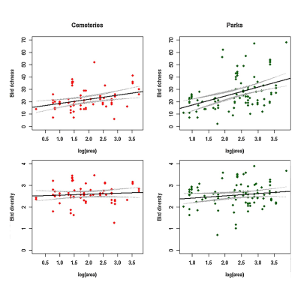 | Tryjanowski, P; Morelli, F; Mikula, P; Krištín, A; Indykiewicz, P; Grzywaczewski, G; Kronenberg, J; Jerzak, L Bird diversity in urban green space: A large-scale analysis of differences between parks and cemeteries in Central Europe Journal Article Urban Forestry & Urban Greening, 27 , pp. 264-271, 2017. @article{Tryjanowski2017, title = {Bird diversity in urban green space: A large-scale analysis of differences between parks and cemeteries in Central Europe}, author = {P. Tryjanowski and F. Morelli and P. Mikula and A. Krištín and P. Indykiewicz and G. Grzywaczewski and J. Kronenberg and L. Jerzak}, url = {http://www.sciencedirect.com/science/article/pii/S1618866717303977}, doi = {https://doi.org/10.1016/j.ufug.2017.08.014}, year = {2017}, date = {2017-01-01}, journal = {Urban Forestry & Urban Greening}, volume = {27}, pages = {264-271}, abstract = {Urbanization is a permanent and still continuing expansion of human settlements and is responsible for dramatic changes of natural areas to urban areas. In traditional view, urbanization is often blamed for the loss of biodiversity and biotic homogenization of natural communities. However, for some species, urban areas, can represent suitable environment for life and even enable them to maintain stable and abundant populations. Urban ecosystems are not homogenous; within human settlements we can find several different habitats which can be occupied by species with different tolerance to certain aspects of urban life. This diversity can be exhibited by interhabitat changes in species richness, diversity and abundances of local communities. Here, we investigated biodiversity patterns in bird communities of two urban habitats, parks and cemeteries, in three Central European countries. Data on species richness, diversity and abundances of birds were collected from published papers as well as unpublished sources. Our analyses revealed that bird species richness was positively correlated with area and age of trees in both habitat types. There was however no significant relationship between species diversity and area in both habitat types. Moreover, species composition of bird communities significantly varied between cemeteries and parks with strong preference for one of habitat types in several species. Predominant occupancy of habitat type by certain species could be linked to interhabitat differences in vegetation structure, human behaviour and management. Interestingly, several bird species often recognised as urban avoiders were detected in surveyed cemeteries and parks.}, keywords = {}, pubstate = {published}, tppubtype = {article} } Urbanization is a permanent and still continuing expansion of human settlements and is responsible for dramatic changes of natural areas to urban areas. In traditional view, urbanization is often blamed for the loss of biodiversity and biotic homogenization of natural communities. However, for some species, urban areas, can represent suitable environment for life and even enable them to maintain stable and abundant populations. Urban ecosystems are not homogenous; within human settlements we can find several different habitats which can be occupied by species with different tolerance to certain aspects of urban life. This diversity can be exhibited by interhabitat changes in species richness, diversity and abundances of local communities. Here, we investigated biodiversity patterns in bird communities of two urban habitats, parks and cemeteries, in three Central European countries. Data on species richness, diversity and abundances of birds were collected from published papers as well as unpublished sources. Our analyses revealed that bird species richness was positively correlated with area and age of trees in both habitat types. There was however no significant relationship between species diversity and area in both habitat types. Moreover, species composition of bird communities significantly varied between cemeteries and parks with strong preference for one of habitat types in several species. Predominant occupancy of habitat type by certain species could be linked to interhabitat differences in vegetation structure, human behaviour and management. Interestingly, several bird species often recognised as urban avoiders were detected in surveyed cemeteries and parks. |
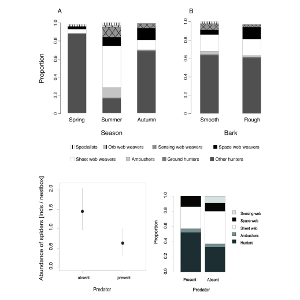 | Černecká, Ľ; Michalko, R; Krištín, A Abiotic factors and biotic interactions jointly drive spider assemblages in nest-boxes in mixed forests Journal Article Journal of Arachnology, 45 (2), pp. 213-222, 2017, ISSN: 0161-8202. @article{Černecká2017, title = {Abiotic factors and biotic interactions jointly drive spider assemblages in nest-boxes in mixed forests}, author = {Ľ. Černecká and R. Michalko and A. Krištín}, url = {http://www.bioone.org/doi/abs/10.1636/JoA-S-15-005.1}, doi = {https://doi.org/10.1636/JoA-S-15-005.1}, issn = {0161-8202}, year = {2017}, date = {2017-01-01}, journal = {Journal of Arachnology}, volume = {45}, number = {2}, pages = {213-222}, abstract = {Although spiders are common inhabitants of tree cavities, factors that drive their community structure in these microhabitats are little known. Here we investigated whether bark type, season, intraguild predation (IGP) among spiders, and presence of vertebrate predators can influence the spider community structure in tree cavities. We examined spider abundance and the taxonomic and functional composition of spiders in nest-boxes within two mixed forest stands in central Slovakia in 2012–2013. In total, 1211 spiders belonging to 31 species were sampled from 60 nest-boxes at two sites over three seasons. Spider abundance peaked in autumn as spiders sought wintering sites. Guilds and taxonomic composition changed seasonally with spring and autumn communities dominated by “Other hunters” (Anyphaenidae, Clubionidae, Philodromidae) while during summer the community was dominated by “Sheet web weavers” (Linyphiidae). The guild and taxonomic turnover may be partly explained by the interaction between spiders' phenology and IGP exerted by winter-active spiders on smaller spiders from autumn until spring. Bark type influenced the guild composition as dominance of “Space web weavers” was higher in trees with rough bark than in trees with smooth bark. The rough bark also reduced the intensity of IGP by Anyphaena accentuata (Sundevall, 1833) on philodromids. The presence of insectivorous birds reduced the abundance of spiders by 67%. The presence of bird predators altered the guild composition as they affected mostly the web spiders. The results show that the biotic interactions and abiotic factors interactively determined the spider community structure in the nest-boxes depending on spiders' functional traits.}, keywords = {}, pubstate = {published}, tppubtype = {article} } Although spiders are common inhabitants of tree cavities, factors that drive their community structure in these microhabitats are little known. Here we investigated whether bark type, season, intraguild predation (IGP) among spiders, and presence of vertebrate predators can influence the spider community structure in tree cavities. We examined spider abundance and the taxonomic and functional composition of spiders in nest-boxes within two mixed forest stands in central Slovakia in 2012–2013. In total, 1211 spiders belonging to 31 species were sampled from 60 nest-boxes at two sites over three seasons. Spider abundance peaked in autumn as spiders sought wintering sites. Guilds and taxonomic composition changed seasonally with spring and autumn communities dominated by “Other hunters” (Anyphaenidae, Clubionidae, Philodromidae) while during summer the community was dominated by “Sheet web weavers” (Linyphiidae). The guild and taxonomic turnover may be partly explained by the interaction between spiders' phenology and IGP exerted by winter-active spiders on smaller spiders from autumn until spring. Bark type influenced the guild composition as dominance of “Space web weavers” was higher in trees with rough bark than in trees with smooth bark. The rough bark also reduced the intensity of IGP by Anyphaena accentuata (Sundevall, 1833) on philodromids. The presence of insectivorous birds reduced the abundance of spiders by 67%. The presence of bird predators altered the guild composition as they affected mostly the web spiders. The results show that the biotic interactions and abiotic factors interactively determined the spider community structure in the nest-boxes depending on spiders' functional traits. |
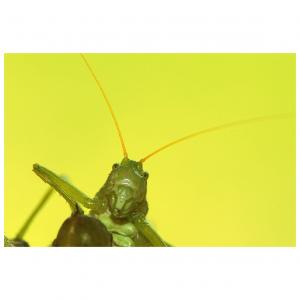 | Nuhlíčková, S; Svetlík, J; Krištín, A First Record of Keeled Plump Bush-Cricket (Isophya costata Brunner von Wattenwyl, 1878) (Orthoptera, Tettigoniidae) in Slovakia Journal Article Travaux du Muséum National d’Histoire Naturelle «Grigore Antipa», 60 (2), pp. 435-440, 2017. @article{Nuhlíčková2017, title = {First Record of Keeled Plump Bush-Cricket (Isophya costata Brunner von Wattenwyl, 1878) (Orthoptera, Tettigoniidae) in Slovakia}, author = {S. Nuhlíčková and J. Svetlík and A. Krištín}, doi = {10.1515/travmu-2017-0009}, year = {2017}, date = {2017-01-01}, journal = {Travaux du Muséum National d’Histoire Naturelle «Grigore Antipa»}, volume = {60}, number = {2}, pages = {435-440}, abstract = {Keeled Plump Bush-cricket Isophya costata is one of ten orthopteran species of European Community interest (Annex II and IV of Habitats Directive), endemic to the Pannonian Basin in Central Europe. It was discovered for the first time in Slovakia in June 2017, in southwestern area of the country (the site Devínske jazero, 48.2722°N / 16.9404°E, 134 m a.s.l.), in continental flooded meadows. The presence of the species in this new site is copying the northern edge of its area. New data of species distribution, its habitat, accompanying orthopteran species are described and main threats and conservation measures of the species are discussed.}, keywords = {}, pubstate = {published}, tppubtype = {article} } Keeled Plump Bush-cricket Isophya costata is one of ten orthopteran species of European Community interest (Annex II and IV of Habitats Directive), endemic to the Pannonian Basin in Central Europe. It was discovered for the first time in Slovakia in June 2017, in southwestern area of the country (the site Devínske jazero, 48.2722°N / 16.9404°E, 134 m a.s.l.), in continental flooded meadows. The presence of the species in this new site is copying the northern edge of its area. New data of species distribution, its habitat, accompanying orthopteran species are described and main threats and conservation measures of the species are discussed. |
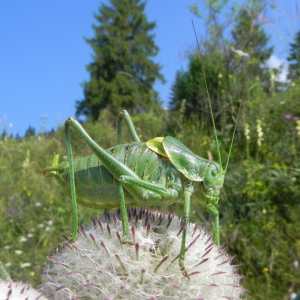 | Špulerová, Jana; Štefunková, Dagmar; Dobrovodská, Marta; Izakovičová, Zita; Kenderessy, Pavol; Vlachovičová, Miriam; Lieskovský, Juraj; Piscová, Veronika; Petrovič, František; Kanka, Róbert; Bača, Andrej; Barančoková, Mária; Bezák, Peter; Bezáková, Magdaléna; Boltižiar, Martin; Mojses, Matej; Dubcová, Magdaléna; Gajdoš, Peter; Gerhátová, Katarína; Izsóff, Martin; Kalivoda, Henrik; Miklósová, Viktória; Degro, Monika; Šatalová, Barbora; Krištín, Anton; Dankaninová, Lenka; Kalivodová, Eva; Majzlan, Oto; Mihál, Ivan; Stašiov, Slavomír; Šolomeková, Tatiana; Ambros, Michal; Baláž, Ivan; Halabuk, Andrej Historické štruktúry poľnohospodárskej krajiny Slovenska Book VEDA vydavateľstvo Slovenskej akadémie vied, 2017. @book{Špulerová2017, title = {Historické štruktúry poľnohospodárskej krajiny Slovenska}, author = {Jana Špulerová and Dagmar Štefunková and Marta Dobrovodská and Zita Izakovičová and Pavol Kenderessy and Miriam Vlachovičová and Juraj Lieskovský and Veronika Piscová and František Petrovič and Róbert Kanka and Andrej Bača and Mária Barančoková and Peter Bezák and Magdaléna Bezáková and Martin Boltižiar and Matej Mojses and Magdaléna Dubcová and Peter Gajdoš and Katarína Gerhátová and Martin Izsóff and Henrik Kalivoda and Viktória Miklósová and Monika Degro and Barbora Šatalová and Anton Krištín and Lenka Dankaninová and Eva Kalivodová and Oto Majzlan and Ivan Mihál and Slavomír Stašiov and Tatiana Šolomeková and Michal Ambros and Ivan Baláž and Andrej Halabuk}, year = {2017}, date = {2017-01-01}, publisher = {VEDA vydavateľstvo Slovenskej akadémie vied}, keywords = {}, pubstate = {published}, tppubtype = {book} } |
 | Chavko, J; Krištín, A Foraging opportunism and feeding frequency in the red-footed falcon ( Falco vespertinus ) in Slovakia: case study from 2017 Journal Article Slovak Raptor Journal, 11 , pp. 31-41, 2017. @article{Chavko2017, title = {Foraging opportunism and feeding frequency in the red-footed falcon ( Falco vespertinus ) in Slovakia: case study from 2017}, author = {J. Chavko and A. Krištín}, doi = {10.1515/srj-2017-0009}, year = {2017}, date = {2017-01-01}, journal = {Slovak Raptor Journal}, volume = {11}, pages = {31-41}, keywords = {}, pubstate = {published}, tppubtype = {article} } |
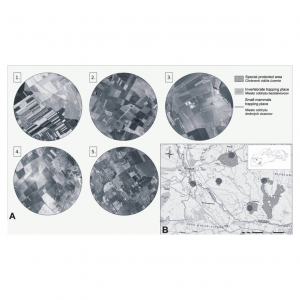 | Krištín, A; Tulis, F; Klimant, P; Bacsa, K; Ambros, M Food supply (Orthoptera, Mantodea, Rodentia and Eulipotyphla) and food preferences of the red-footed falcon ( Falco vespertinus ) in Slovakia Journal Article Slovak Raptor Journal, 11 , pp. 1-14, 2017. @article{Krištín2017b, title = {Food supply (Orthoptera, Mantodea, Rodentia and Eulipotyphla) and food preferences of the red-footed falcon ( Falco vespertinus ) in Slovakia}, author = {A. Krištín and F. Tulis and P. Klimant and K. Bacsa and M. Ambros}, year = {2017}, date = {2017-01-01}, journal = {Slovak Raptor Journal}, volume = {11}, pages = {1-14}, keywords = {}, pubstate = {published}, tppubtype = {article} } |
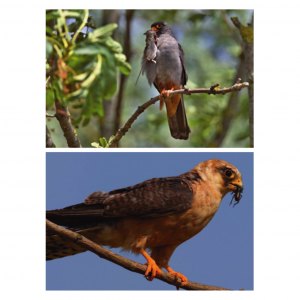 | Tulis, F; Slobodník, R; Langraf, V; Noga, M; Krumpálová, Z; Šustek, Z; Krištín, A Diet composition of syntopically breeding falcon species Falco vespertinus and Falco tinnunculus in south-western Slovakia Journal Article Slovak Raptor Journal, 11 , pp. 15-30, 2017. @article{Tulis2017, title = {Diet composition of syntopically breeding falcon species Falco vespertinus and Falco tinnunculus in south-western Slovakia}, author = {F. Tulis and R. Slobodník and V. Langraf and M. Noga and Z. Krumpálová and Z. Šustek and A. Krištín}, year = {2017}, date = {2017-01-01}, journal = {Slovak Raptor Journal}, volume = {11}, pages = {15-30}, keywords = {}, pubstate = {published}, tppubtype = {article} } |
2016 |
|
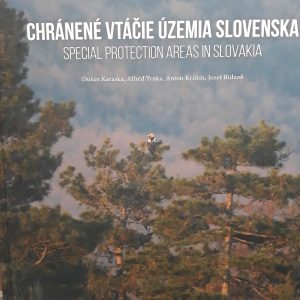 | Karaska, D; Trnka, A; Krištín, A; Ridzoň, J Chránené vtáčie územia Slovenska Book Štátna ochrana prírody Slovenskej republiky, Banská Bystrica, 2016, ISBN: 978-80-89802-16-6. @book{KARASKA2016, title = {Chránené vtáčie územia Slovenska}, author = {D. Karaska and A. Trnka and A. Krištín and J. Ridzoň}, editor = {D. Karaska and A. Trnka and A. Krištín and J. Ridzoň}, isbn = {978-80-89802-16-6}, year = {2016}, date = {2016-10-01}, publisher = {Štátna ochrana prírody Slovenskej republiky}, address = {Banská Bystrica}, keywords = {}, pubstate = {published}, tppubtype = {book} } |
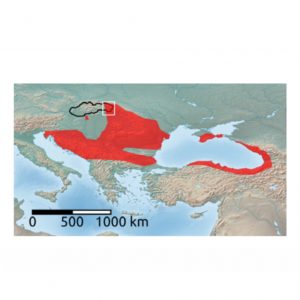 | Krištín, A; Jarčuška, B Distribution and ecology of the flightless bush-cricket Poecilimon schmidtii at its northern range margin Journal Article Biologia, 71 (9), pp. 1049-1060, 2016. @article{Krištín2016, title = {Distribution and ecology of the flightless bush-cricket Poecilimon schmidtii at its northern range margin}, author = {A. Krištín and B. Jarčuška}, url = {https://www.researchgate.net/publication/309281814_Distribution_and_ecology_of_the_flightless_bush-cricket_Poecilimon_schmidtii_at_its_northern_range_margin}, doi = {10.1515/biolog-2016-0128}, year = {2016}, date = {2016-09-01}, journal = {Biologia}, volume = {71}, number = {9}, pages = {1049-1060}, abstract = {The distributional patterns and ecology of the ponto-mediterranean species Poecilimon schmidtii were only insufficiently known until now, despite assumed to be one of the northernmost distributed species of the genus. Based on the review of all available published and own field data, we improved the distribution map of the species and recorded it for the first time from Poland. The distribution survey was carried at 1,208 sites in Slovakia, 39 sites in SE Poland and 26 sites in W Ukraine between 1994 and 2015. P. schmidtii was found at 59 sites and the habitat requirements were analysed. The results show a clear preference of the species for broadleaved forest ecotones with hazel and Rubus spp. shrubs being the main host plants. The species was present in grid cells with a lower mean altitude, a higher annual mean temperature and a lower annual precipitation compared to those available within the northern species’ range. Its altitudinal distribution was between 105 and 950 m a.s.l. Altogether, 70 Orthoptera and one mantid species were recorded and assemblages of Orthoptera and Mantodea were described for 49 sites with P. schmidtii in Slovakia and Poland. On average 18.9 ± 7.5 (SD) species were found per site, ranging from 7 to 37. Using detrended correspondence analysis it was not possible to distinguish between the orthopteran assemblages with and without (n = 94) P. schmidtii. In the assemblages, P. schmidtii was more often present with mountainous species. }, keywords = {}, pubstate = {published}, tppubtype = {article} } The distributional patterns and ecology of the ponto-mediterranean species Poecilimon schmidtii were only insufficiently known until now, despite assumed to be one of the northernmost distributed species of the genus. Based on the review of all available published and own field data, we improved the distribution map of the species and recorded it for the first time from Poland. The distribution survey was carried at 1,208 sites in Slovakia, 39 sites in SE Poland and 26 sites in W Ukraine between 1994 and 2015. P. schmidtii was found at 59 sites and the habitat requirements were analysed. The results show a clear preference of the species for broadleaved forest ecotones with hazel and Rubus spp. shrubs being the main host plants. The species was present in grid cells with a lower mean altitude, a higher annual mean temperature and a lower annual precipitation compared to those available within the northern species’ range. Its altitudinal distribution was between 105 and 950 m a.s.l. Altogether, 70 Orthoptera and one mantid species were recorded and assemblages of Orthoptera and Mantodea were described for 49 sites with P. schmidtii in Slovakia and Poland. On average 18.9 ± 7.5 (SD) species were found per site, ranging from 7 to 37. Using detrended correspondence analysis it was not possible to distinguish between the orthopteran assemblages with and without (n = 94) P. schmidtii. In the assemblages, P. schmidtii was more often present with mountainous species. |
